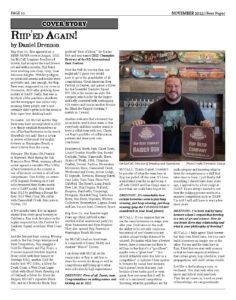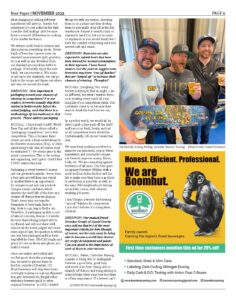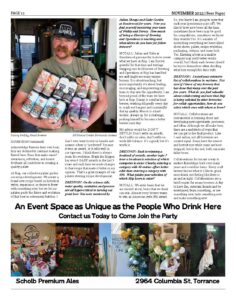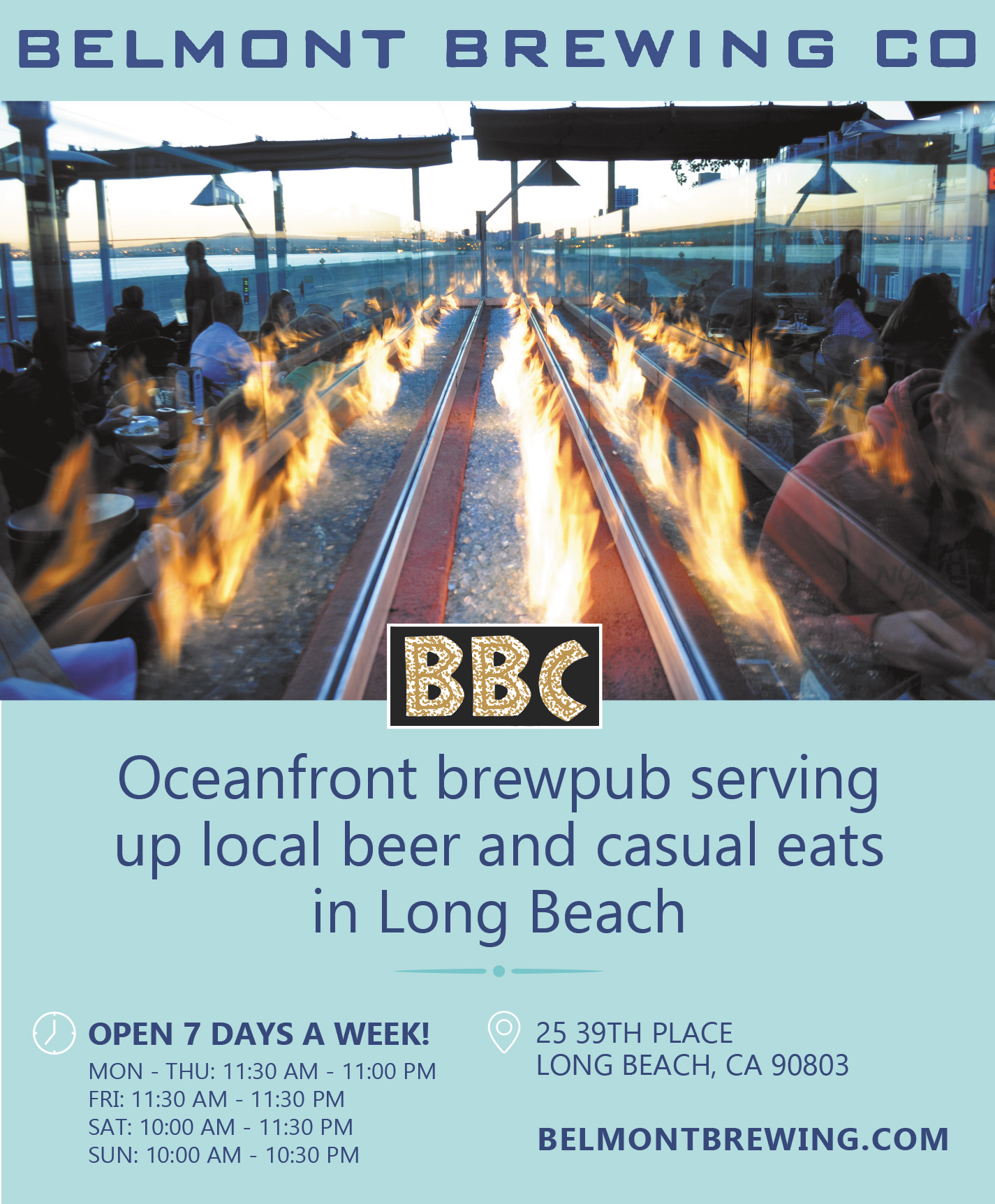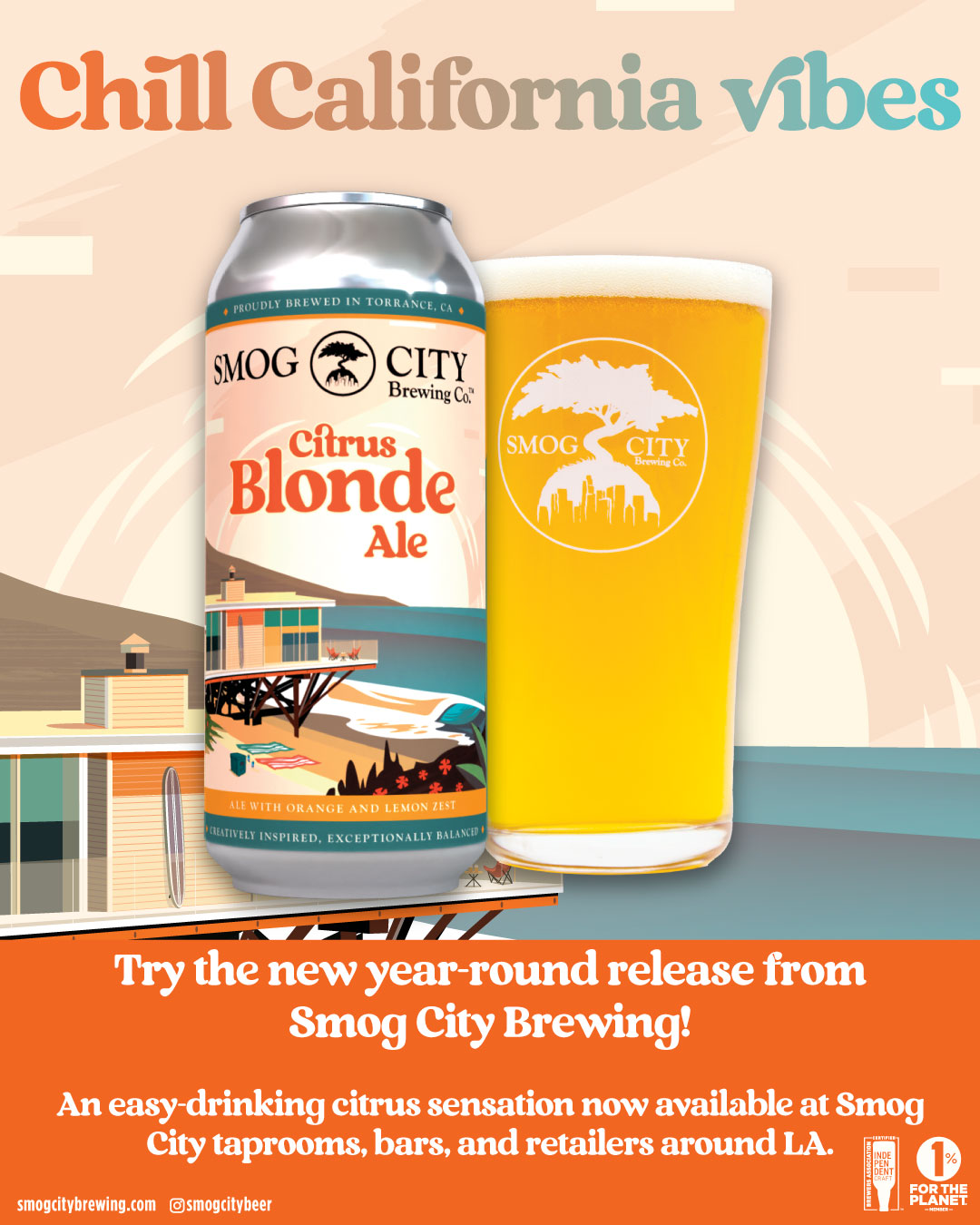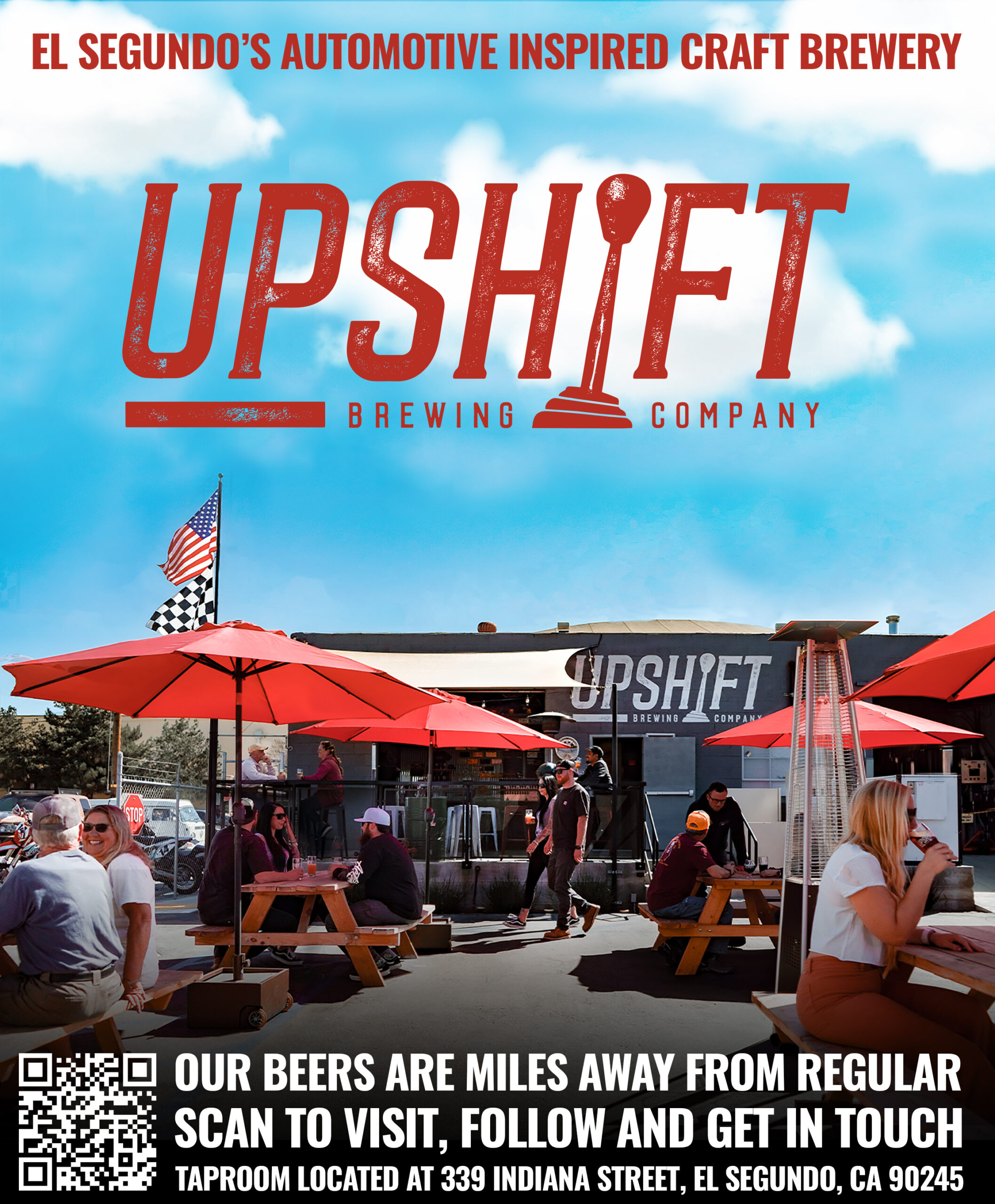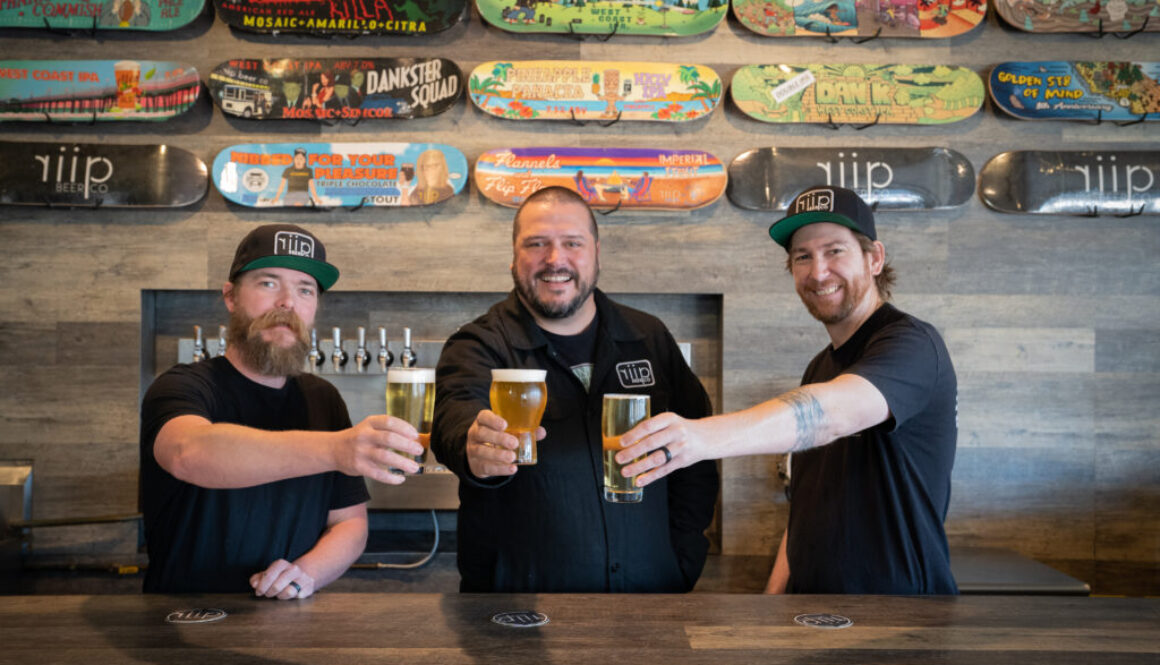
Cover Story

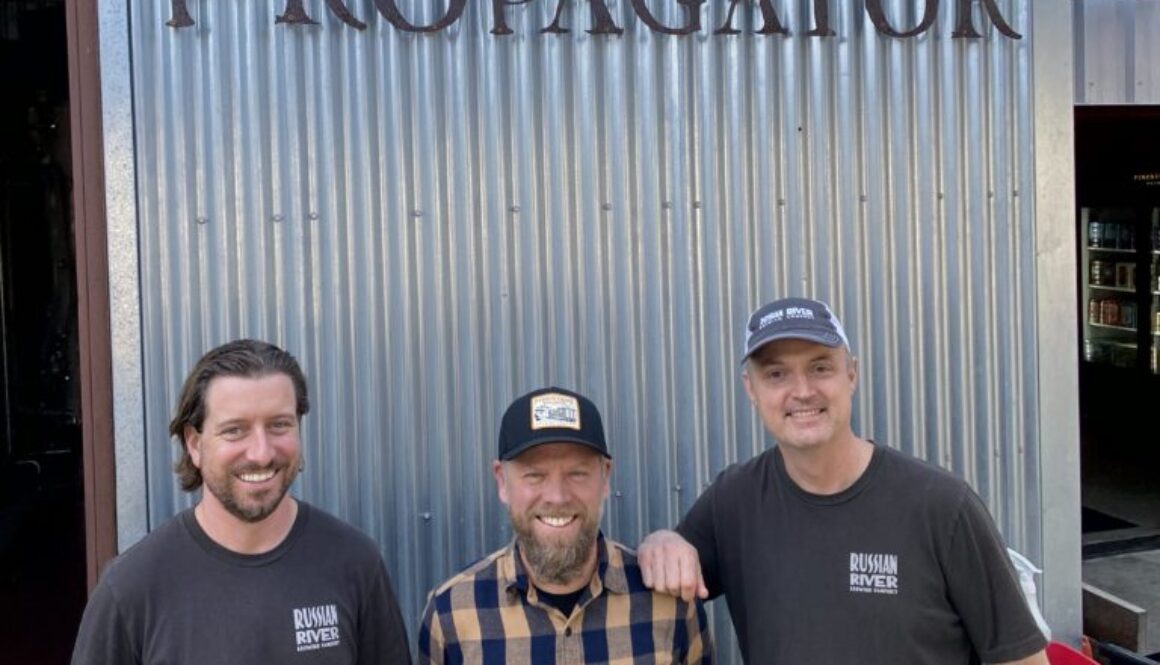

Passion, Process and Patience
Daniel Drennon Cover Story, Featured Article
Urban Roots Brewing and Smokehouse: 2021 Brewery of the Year
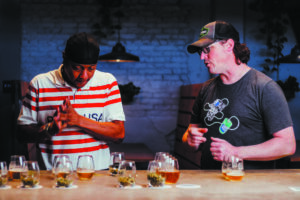
Photo Credit: Troy Cooper / Urban Roots
At the California Craft Brewers Cup awards this Fall, unsurprisingly Urban Roots Brewing and Smokehouse was named “Brewery of the Year” for the state of California. Sadly, Beer Paper was still dormant due to the Damnemic. Otherwise, Urban Roots would have surely been our October cover story. Now that the paper has risen like the proverbial Phoenix, we interviewed Urban Roots brewmaster and co-founder Peter Hoey as our year-end cover story.
Urban Roots launched in Sacramento way, way back in May, 2018 to high expectations, as well as excitement and anticipation, since Hoey and co-founder Rob Archie were already respected, if not revered, in the wonderful world of craft beer.
Hoey, who doesn’t look old enough to have spent nearly a quarter of a century honing his knowledge and skills, has evolved as a brewer the old-fashioned way. First, he got an education as a student, but later became a long-time teacher, at the American Brewers Guild. He climbed the ladder from being a shift brewer at some obscure place in Chico, Sierra Nevada, before accepting the head brewer gig at Bison Brewing in Berkeley. His next step was becoming the brewmaster at Sacramento Brewing Company before launching his first solo effort, Odanata Brewing, a contract brewing endeavor. When that didn’t pan out (contract brewing is a tough road for many reasons), Hoey started consulting. That role translated into an offer to become Brewer Supply Group’s (BSG) West Coast Regional Manager which he was for seven years.
Along the way, he met and became pals with his future Urban Roots co-founder Rob Archie. Archie is the owner of the critically-acclaimed Pangaea Bier Café in Sacramento, a super cool beer spot that features a fantastically eclectic beer menu and a phenomenal burger that has been named Best in Sacramento multiple times. The two hit it off and discovered they loved travelling the globe in search of world class beer and, even more importantly, immersing themselves in what Hoey describes as “beer culture,” that unique camaraderie characterized by a strong sense of community and friends who share a love and respect for the art form of brewing great beer.
DRENNON: Urban Roots has been what I call a “buzz brewery” and a beer industry darling since the day you opened. To what do you attribute that remarkable affection from patrons and industry peeps?
HOEY: We are happy to have been well received from the start! I think the biggest contributor to that are the relationships that Rob Archie, my business partner, and I have built over our careers. People we look up to and people that inspire us were standing with us when we opened and I felt a huge responsibility to deliver the very best we possibly could to not let them or our guests down. We joke that the brewery was new but Rob and I weren’t. Our goal was and is to contribute to beer culture in Sacramento and in California – to be part of what makes beer in this state special and that is one of our driving forces to this day.
DRENNON: Why did you guys choose the name Urban Roots and what does it mean to you?
HOEY: Making beer is a combination of agriculture and industrial production. All the ingredients are grown away from cities on farms but most breweries can be found in city centers. That combination of urban setting of an agriculturally based product led us to the name, Urban Roots. The city and the farm coming together to make beer.
DRENNON: I’ve heard and read how you incorporated your favorite elements of breweries from you and Rob’s travels, but please highlight the main ones for our readers.
HOEY: Rob and I traveled together going to beer events for nearly a decade before this project and fell in love with beer cultures all over the world. I was drawn to the biergardens of Germany, which is why we have the large front patio complete with chestnut trees. Rob loved the cafes of Belgium which influenced our bar area design. We both loved the comfort and community of an English pub which is why in the restaurant area we have the high-backed booths. Beer cultures are different all over the world but the one constant is being a place to gather – whether it’s standing at a bar, tucked into a booth, or taking in the beer garden on a sunny day. We loved all those elements and wanted to incorporate our favorite things into the design of the brewery to share with Sacramento and with visitors from all over.
DRENNON: Do you have a brewing philosophy and is that something that has evolved over your many years as a brewer?
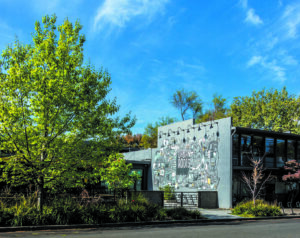
Photo Credit: Troy Cooper / Urban Roots
HOEY: Curiosity and inspiration. I have always been curious and curiosity drives a lot of what I have learned and a lot of what we do at Urban Roots. Whether it is a new ingredient, or a new process, I want to dive into it and learn as much as I can and bring that back to the brewhouse. Inspiration plays a big role in that as well – tasting a new food can inspire a new beer, or having a remarkable experience on a trip fuels me to look at how our team can improve. Looking at what we can add to make the beer or experience better for our guests. Being open to change and continual improvement is important for the entire business. We are always trying to be better than you were yesterday. You never arrive at “great” – it is a process not a destination and letting that guide or decision making keeps the whole team working together on making great beer.
DRENNON: In any successful partnership, whether it be marriage or business, both individuals complement one another and bring certain advantages to the relationship. How do you and Rob complement one another and what are the strong suits for each of you?
HOEY: Rob has taught me so much over the years about hospitality and guest experience. It’s something that comes naturally to him that didn’t to me. His ability to lead and coach has made me a better leader in the company. We still make decisions together for all business operations but knowing I have such a strong partner looking after hospitality frees me up to focus on brewery operations. I see brewers open their own businesses and frequently they are pulled into tasting room or restaurant management because that side of the business needs a lot of attention. It pulls them out of the brewery that got them into the business in the first place. It is intensely important to me that I remain involved in the brewing operations because that is where my heart is at and working with Rob allows me to do that with confidence that our hospitality won’t suffer when the brewery is demanding my attention.
DRENNON: Having been a teacher at the American Brewers Guild for 13 years, do you believe a person can learn to become a great brewer? How much is natural talent and how much is education, application, process and work ethic?
HOEY: All of those things are important. Being able to thoughtfully impact your beer through a command of the brewing process is really what it’s about. That takes experience, education, and making lots of mistakes to arrive at the thing that works. Building a tool box starts with education, then experience, and you continually add whatever is necessary in order to solve problems, create recipes, and make better and better beer as you grow as a brewer. Drive, ambition and curiosity play a major role in the growth of a brewer and ultimately learning and growing is what is going to help anyone make better beer.
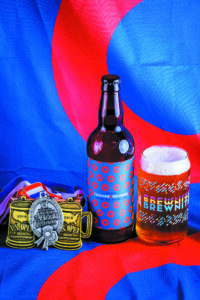
Photo Credit: Troy Cooper / Urban Roots
DRENNON: To extrapolate that line of thinking from the quality of the brewer to the quality of the beer, what is the key to brewing great, or what I like to call “wow beer,” as opposed to the more common encounter with good or “just OK beer?”
HOEY: I talk a lot about the small things, water chemistry, pH, recipe formulation, process. Every brewer has access to the same set of ingredients so it’s how you combine them and the processes you use that makes your beer unique and hopefully great. It is all the small details that can elevate a beer from good to great. The other thing I think it requires is being realistically critical of your own beers and not being afraid to continually make small tweaks to fine tune flavors. Ingredients change from crop year to crop year so recipes can’t be static. The other thing is editing what is released – no one wants to dump a batch but if what is in the tank isn’t good then it shouldn’t see the light of day. The pressure can be intense to release just ok beer especially for startups and the last two years of operational restrictions we all experienced. The damage a batch that isn’t up to your standards going out into the world can do to your reputation is far more expensive than making the choice of dumping it.
DRENNON: Where do you rank the importance of equipment, ingredients, original recipes and water quality? Or are they all inextricably linked and thus equally critical to brewing great beer?
HOEY: If a brewer is brewing by taste and experience, brilliant beer can be made on rudimentary systems. And just ok beer can be made on state of the art automated brewhouses. It really is up to the brewery to craft something delicious given the constraints that they face, be it municipal water that isn’t ideally suited for brewing, converted dairy equipment for a brewhouse, or whatever might not be an ideal situation. Making critical choices in recipe, process, fermentation can result in delicious beer in some of the most unusual brewing situations.
DRENNON: I am hoping that the title to this cover story reveals your own recipe for becoming a world class brewer: Passion, process and patience. Have I gotten close to what might just be the Urban Roots mantra?
HOEY: Pretty close! We love what we do, are passionate and process driven brewers. And patience comes in for many of our releases. Waiting until the beer is ready can be difficult. Brewing lager takes a long time. Barrel aged beer takes even longer. The temptation to rush an IPA through is real when you are up against cellar capacity and are risking running out of beer at the pub or shorting distributors. Time is an ingredient that we talk about often for our barrel aged beers, lagers, and even the quicker fermenting ales we produce.

Photo Credit: Troy Cooper / Urban Roots
DRENNON: Having been born and raised in North Carolina, one of the handful of BBQ-crazy states in our country, I would be remiss to not ask about the “Smokehouse” component of Urban Roots Brewing and Smokehouse. In my humble opinion, your BBQ equals the world class stature of the beer, which is no mean feat. Why did you and Rob choose BBQ and what is the secret to great BBQ? (grinning) Any chance that is also has to do with passion, process and patience?
HOEY: We felt that BBQ would be great cuisine to pair our beers with and it comes back to community again. BBQ is one of those foods that brings people together, whether in a back yard, at a smokehouse or in a park. It’s another social component of what we built in Sacramento. You can feed lots of people really fast so it is great for groups and gatherings. And there is no secret, just like the beer, the biggest ingredient is time. We slow smoke overnight most of the meats for service the following day. The butcher’s attention to detail on how the brisket is trimmed, when it is wrapped, how long it rests and how it is cut are all the little things that take it from good to great. There are a lot of parallels to our beer production philosophy there. And just like only being as good as your last beer, the smokehouse is only as good as its last brisket. Both facets of the business have to get up and do it again tomorrow and always strive to do it better than last time.
DRENNON: Well, Peter. Congratulations on being named Brewery of the Year. I strongly recommend that Angelenos take advantage of a short, inexpensive flight up to our state capital to visit your gorgeous and now award-winning brewery. I know I’ve been spoiled to be able to drink Urban Roots on draft at Bottlecraft in Long Beach as well as at Beachwood and Green Cheek for the wonderful collab beers you did with Julian and Evan respectively. Who distributes your beer in the greater Los Angeles region and where can readers found out which area beer bars are lucky enough to carry your damn delicious beers?
HOEY: Our beers are distributed in Los Angeles by Lime Ventures. Best way to find out where to buy the beer would be keeping an eye on your favorite pub or bottle shops’ social media. We don’t maintain a list because so many accounts these days rotate beers in and out and we are sometimes out of stock if we can’t keep up with demand but you can always ask your favorite spot to bring in our beer.
DRENNON: Speaking of collaborations, I’m sure Urban Roots is in high demand and receives more requests than you can accommodate. How do you go about choosing with whom to collab and what do you see as the value?
HOEY: For us it is about inspiration and learning together. Often, they come about while hanging out or traveling with another brewer and we just get talking about something we are working on. What are we going to learn from the other brewery and what will they learn from us? Will we create something that is outside our comfort zone or typical style? Or will we learn (or share) a new technique that helps both brewers? It’s about growth and relationships.
DRENNON: Finally, if you had to describe yourself in one word or phrase, would it be?
HOEY: Curious.

VINNIE
Tomm Carroll Cover Story, Featured Article
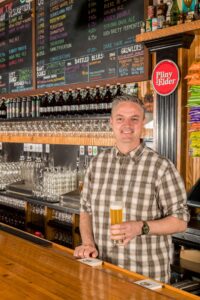
All Photos Courtesy of Russian River Brewing Company
Vinnie Cilurzo. Often described in glowing terms like “brilliant brewer, the nicest guy in the business and a damn fine washoe player,” I’m lucky enough to call him a great friend and someone who has been with me on my own brewing journey which now eclipses 25 years. He’s part of the single name club and truly the one and only Vinnie you need to know if you want to KNOW what great beer tastes like.
When asked to interview Vinnie for Beer Paper, I thought, what is it about my longtime friend that you don’t know? As one of the most famous and recognizable brewers in the world, it’s clear that one day he’ll have his own star on the brewing walk of fame. There’s nothing he hasn’t accomplished and doubtful there is anything more he could do to prove his largeness. It also feels that nearly everything has been written about him already!
But as someone who has been lucky enough to share copious pints of Blind Pig, travel half away around the world with him and work collaboratively on some incredible beers, I must confess, I probably have pinched myself more than a few times wondering how the hell did these opportunities come to fruition? It’s kind of like an out of body experience, “That’s Vinnie Frigging Cilurzo sitting there and, you know, we’re just chewing the fat on what makes Simcoe hops so great.”
So how did two guys from Southern California gravitate towards a shared path of awesome beer? In short, I think it’s a strong sense of being cut from a similar cloth. Vinnie grew up in Temecula, CA, about 60 miles north of San Diego where I grew up. Neither of these cities was a shining beacon for craft beer in the early 1990s. We entered into the business a couple of years apart with both of us being very young and enthusiastic brewers eager to find our paths.
More often than not, these paths shared parallel trajectories. Often, we would catch up at beer festivals including the Great American Beer Festival where our booths were typically in the same aisle. Many of our earliest conversations centered on sour beer production methods and things each of us were doing. As he was carving out his brewing niche in Northern California, I was doing much the same in Southern California. So, in many ways we were sounding boards for each other at a time when little documentation was available to brewers who wished to attempt this style of brewing.
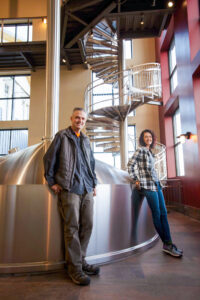
All Photos Courtesy of Russian River Brewing Company
In 2003, the Great American Beer Festival awarded the very first Double IPA medals. In a stroke of fate from the brewing Gods, Vinnie and I shared the stage that day as two of the first to medal in what now has become one of the most hotly contested categories. It was a moment I will never forget.
While during the earliest parts of our careers, we focused on how to be better brewers, nowadays, it feels like more of our conversations center around how to be great business owners in the great state of California. Casual conversations over Gin and Tonics have become a bit more plentiful of late. His love for The Botanist means it’s always easy to get him to stay for just one more.
Over the years, we’ve shared our passion for making the best beers possible. Sure, we’ve aged a bit and there’s more salt than pepper in the little hair we still have. But 25 years later, I’m proud to say he’s always made me a better brewer and for that I am thankful to have made his acquaintance and that I am certain we will continue to find time to sit down and discuss the world of beer in meaningful ways.
Without further ado, I present my friend Vinnie.
TOMME: You broke into the business in 1993? At the time there was very little craft beer and location wise it was another challenge. Blind Pig has been well documented so let’s talk about the way it felt to be so young, newly married and running a business.
VINNNIE: It was actually 1994 when we opened Blind Pig Brewery in Temecula, at the time there were only three micro-breweries in San Diego County and a handful north of Temecula. Despite the 80+ hour weeks, those were exciting times, I was young and full of energy so the long days were not an issue. I think more than anything I was making the beers I wanted to drink and we had to figure out how to sell a hoppy Golden Ale and an IPA.
TOMME: Leaving Blind Pig you moved to Korbel and were given the chance to build Russian River from the ground up. As someone who got the same opportunity with The Lost Abbey, I know what that is like. Is there a moment from Korbel when you felt like perhaps you transitioned and you knew you could really make a full career out of this?
VINNIE: It was late 1996 when I left Blind Pig and spring of 1997 when Korbel hired me to run their new brewery, Russian River Brewing Company. Initially one of the winemakers was overseeing the brewery operation and we made a Golden Wheat Ale, Pale Ale, Amber Ale, and Porter. Less than a year later Korbel gave me full reign of the operation and I switched up the line-up of beers including dropping the Amber Ale and switching it to an IPA, which at the time there were still very few IPAs available. It was about that time that I knew that RRBC would be a success and that Korbel had the confidence in me to run their small brewery.
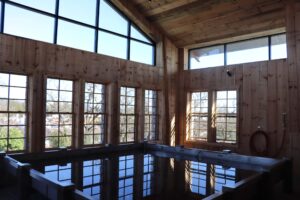
TOMME: There was a point when Korbel offered you the opportunity to take full stewardship of the Russian River Brewing brand. Given that Natalie (your wife) had a successful career in the wine world, it clearly was a monumental jump to dive head first into owning a brewery together. From the outside looking in, you both seemed to make it look effortless. Care to share the secret sauce (other than sharing great Pinot Noirs)?
VINNIE: It was April 1, 2002 when my boss at Korbel called me to his office to tell me they had officially decided to close the brewery. Yes, it was April Fool’s Day so I did have to ask, “you’re joking, right?” In truth this was a discussion that had been going on for a few months which I was involved with. In the end they decided to close the brewery but I was able to trade my severance package for the RRBC name as well as our other beer brand names such as Damnation and Pliny the Elder. A year later in 2003, I officially left Korbel. During that year, Natalie and I wrote a business plan and found 30 investors to fund RRBC version 2.0. When we opened the brewpub in Santa Rosa in April 2004, Natalie officially joined the brewery and left the wine industry. I think the key to us being both married and business partners is the fact that our jobs within RRBC and our skill sets are totally different. There are certainly duties within our business that we have cross over in, but in general, we do completely different jobs. One thing for sure is we try to get away from is the day to day of the brewery so we can think big picture for our business. These are often business trips, but it still gives us a chance to remove ourselves from the day to day. This reminds me of the old saying, “it is the difference between working at your business or on your business.”
TOMME: Do you even remember what it was like before Double IPA was a thing? Given that Pliny the Elder continues to be an amazing example, you should probably talk about the path to bring Pliny to people and at the same time all of the process improvements you’d made. I doubt many people even know how hard your team has worked on this beer and Blind Pig in particular.

VINNIE: We have been making PTE since 1999, so it was first brewed when we were at Korbel. But it was in 2004 when we opened in Santa Rosa that it became a full-time beer. And it wasn’t until 2008 that it started gaining popularity and by 2010 and beyond its popularity kept growing. Initially we couldn’t even give it away, this was even the case up until 2008. There was a lot of hand selling the beer by way of beer festivals or literally taking a growler or bottle into an account and tasting them on the beer. I would never just leave the sample, I always wanted to taste the PTE sample with the beer buyer. So, there were difficulties on multiple fronts, because it wasn’t just selling a highly hopped beer at a time when the average consumer wasn’t drinking IPA, finding the best ingredients was not as easy as it is today. Keep in mind, there was no Citra, Mosaic, or El Dorado, to name a few of the popular designer hops. Pliny was built around Simcoe and Simcoe was the first private hop variety to really blow up. It didn’t happen overnight, but I loved the citrus, pine, and pungent notes that Simcoe carried. So back in the day the recipe adjustment I was making were mostly ingredient driven. And although we still make small tweaks to the ingredient bill now and then, these days the larger changes are process changes to create more aroma and flavor impact as well as better shelf stability.
TOMME: When you opened on Fourth Street in Santa Rosa, you really established yourselves as Northern California locals and have since really become a massive part of the beer scene. Let’s talk about that and what it has meant to bring Pliny the Younger to so many people?
VINNIE: It is funny to think back to 2004 when we opened the Santa Rosa RRBC brewpub. The very first day we opened it was very busy but, over time, business settled in and we had some pretty dark days when nobody was coming in. I remember one random mid-week day in 2004 or 2005 when nobody came in until 5 pm or so for happy hour. Folks always think of the Santa Rosa brewery being busy, but it has not always been that way. We were an IPA focused brewery and IPAs were not popular yet to the general drinking population. But we stuck with our focus on hoppy (and Belgian and sour barrel aged) beers and in time folks got acclimated to the big hoppy aroma and flavor of our beers. Having a brewpub was very helpful here because our staff could educate the consumer on what they were tasting. Pliny the Younger (PTY) was first made in 2005, but it wasn’t until 2010 that it blew up. Natalie and I never expected PTY to become a cult beer like it has, in fact, we tell our staff every year before the PTY release to remember that this might be the year when folks don’t show up. Natalie and I have a firm belief to run our business with a little paranoia with the idea being that we can always make better beer, food, and give an even better customer experience. This sounds a little contrived but we truly believe it and each year we try to make the PTY experience even better than the last. Walking out and talking to guests in line for PTY is still one of the most humbling things I do each year and Natalie and I try to walk the line at both breweries every day during the release.
TOMME: The Toronado in San Francisco and owner Dave and Jennifer Keene have been huge supporters of you and Natalie. We all have great T-Room stories. Have any to share that you love? (Anniversary blends, Washoes, The Tamale Lady, Paxton Brunches?)
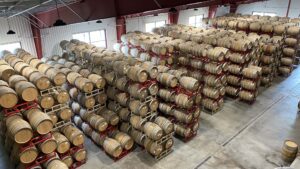
VINNIE: Yes, Toronado (San Francisco) has been a huge part of our success in San Francisco. In San Diego, before Toronado (San Diego) closed this year, Toronado was also a big part of our distribution in SoCal. I remember the first time I took some beer samples for Dave to taste, it was Damnation and HopTime Harvest Ale. Dave keyed in on the HopTime, our wet hop beer which at the time was made using 100% of our own estate hops that we grew on the property of Korbel. Dave loved the HopTime, and while he and I finished the bottle I had brought down, the only thing he asked was, “how many kegs can I purchase?” He never asked how much the kegs cost and that always resonated with me. Dave never cared what the cost was, he only wanted to know how many he could sell. I’ve been to Belgium twice with Dave, one was around Toronado’s 20th anniversary and the second was just before their 25th anniversary. Traveling through Belgium and visiting breweries like Orval and Duvel with Dave are still some of my favorite memories though there are many which include beer blends we have made together as well as many late nights playing Washoes.
TOMME: We have played a game or two of Washoes!
VINNIE: Well, we have you to thank for the introduction of Washoes to the beer industry. My first memory was playing Washoe’s at the Anderson Valley Beer Festival with you, Dave, and many others. We still have boards at our brewery and though we don’t play as much as we use to, it is always a fun and memorable.
TOMME: It’s been over 25 years of being in this business and beer has changed significantly. One thing that has not changed is your fervent desire to improve your beers. As an industry Grey Beard, why is this process of improving so important to you? Clearly, it’s a ton of work.
VINNIE: I love learning. I think this fact as well as what I mentioned earlier about running our business with a little paranoia keeps driving me to make better beer. Another thing that keeps me striving for even higher quality beer is the fact that there is so much competition now, especially in the IPA category. With all this competition, I have to keep improving PTE, Blind Pig, and the rest of our beers. When we built our new(ish) Windsor, CA production brewery, it was an opportunity to add some components to our operations that improve the quality of our beer. We could have easily kept doing what we were doing at our old production facility but Natalie and I really wanted a brewery we could be proud of and develop a unique customer experience which I think we have done with tours that are a very sensory driven experience.
TOMME: The Brewers Association has bestowed two very important awards on you. The 2008 Russell Schehrer Award as well as the 2017 Brewers Association Recognition Award (shared with Natalie). What do these mean to you and talk about the process of giving back to your brewing community and how that feels for you and Russian River.
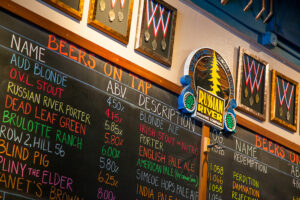
VINNIE: Both awards were very humbling to receive because they are voted on by our peers, especially for the RS Award which is voted on by the past winners. As a young brewer there were far less brewery peers to lean on for advice but there were certainly plenty who helped Natalie and I out. To me it is my obligation to now give back and this is something Natalie and I have done as much as possible.
TOMME: You were an early adopter of barrel aging for sour beer production. Knowing that you love these beers and continue to make them, what have been your experiences with these beers and the uber consumer of late?
VINNIE: This is still one of my favorite parts of our brewery, especially now with all the extra space at the Windsor facility. I mentioned earlier about getting help from peers in the beer industry. Hands down you were my main brewer peer who I communicated with regarding making these types of beers. There were no books, web sites, or podcast on the topic and all you and I had was each other to rely on to bounce ideas off of. I still remember those days like it was yesterday because it was so exciting and, to some degree, you and I were writing the script on how others would produce these beers should they decide to make funky beer. Present day things have really changed and I’m sure you agree, with the popularity of quick sour beers, there are less people drinking old school, barrel aged sour beer. There are also a lot more breweries making these beers which sometimes take years to make. I don’t think the pie has gotten much larger for the consumers that are into these beers and, with more breweries making these beers, we are all competing for the same consumers still into these beers. But the same thing as with our IPAs, I don’t rest on our laurels with our funky beers and I feel like we can continue to improve the quality. One example is at the Windsor facility the barrel room can hold the temperature firmly at 58F which to me is very important when making these beers.
TOMME: Russian River beers have famously come in 500 ml single serve bottles. This wasn’t always the case and now you’re getting into canning runs. What do you see your packaging looking like in the future (cork finish, 500 ml, four-pack, etc.)?
VINNIE: We did six-packs at Blind Pig and at RRBC-Korbel, and one should always learn from their past experiences and mistakes. Natalie and I knew when we re-opened RRBC in Santa Rosa that we would never do six-packs again. I was looking for a single serving size bottle and remembered the two German beer bottles that I saw in Germany many years before. After seeing the two main German bottles I fell in love with, it is the one that we still use today. We now fill them to 17.25 oz, but one of the things I like is that it is basically a pint, so it is around the same size that most Americans purchase a beer in a bar or restaurant. Although we are doing some canning now, we are still firmly a bottle (and keg) brewery with cans being a very small percentage of what we do. The split is probably 95% bottles and 5% cans. For our barrel beers we still use a cork finished bottle. It was many years ago that we switched from a 750ml to a 375ml bottle with the idea being similar to the bottle use for our hoppy beers. I wanted it to be single serving. 750ml of sour/barrel aged beer is too much for one person. Although the industry continues to grow via cans, I’m still firmly a believer in bottles. Though cans have their advantages such as being lighter weight, don’t let light in, and if seamed properly do hold up better if your beer doesn’t sell quickly. But our beer sells quickly and with great packaging equipment a bottle will always have a lower Total Package Oxygen (TPO) compared to a can at packaging, and TPO is a cornerstone of our quality program and for this I like bottles better.
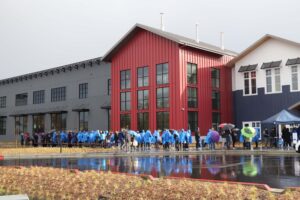
TOMME: What’s your favorite font? (There seem to be all kinds of jokes about Russian River fonts online)
VINNIE: Ha, that is funny!
TOMME: Will there ever be an Isabelle Proximus reunion tour?
VINNIE: Interesting question. I like where Isabelle Proximus sits in the craft beer history book. For those that remember it, the beer holds fond memories and the beer had an exceptional flavor profile. Though I wouldn’t close the door on a reunion brew, there is a side of me that likes to leave it in the past and keep it as a great memory!
TOMME: You built a “brewer’s brewery.” People come from all over the world to see it. Explain what that was like and what else you want to accomplish with that space.
VINNIE: I remember while we were in the design phase, we were nearly debt free. Pliny sales were great, we were at capacity at both our breweries at the time, and in general things were going well. Ken Grossman was a huge help in designing the brewery but I do remember him asking me, “why do you want to build a new brewery and take on all that debt?” I had a simple answer, “because Natalie and I want a brewery we can be proud of!” Ken knew exactly what I meant as he had recently built his dream brewery in North Carolina. Building our dream brewery was an amazing, nerve-racking experience but oh so rewarding. Installing open top fermenters, a German brewhouse, and a Koelschip to name a few things was pretty damn cool. Being able to incorporate all the things I have dreamed of into a brewing facility was a once in a lifetime experience and probably something I wouldn’t want to do again as it probably took a couple years off my life. But I wouldn’t trade it for anything.

TOMME: What makes for a bad day at the office?
VINNIE: I make beer for a living so, in truth, how bad can a day be? Of course, I have a bad day from time to time, but I have to remind myself that it is just beer and, though it brings joy to people which I appreciate, I also don’t take it that serious because after all, and like I said before, it is just beer. I’ve said that in the past and some people have gotten mad at me for saying, “it’s just beer” but there are people in far worse situations even on my worst day in the brewery, so I try to remind myself of this on the occasional bad day.
TOMME: Given the epic list of things you have accomplished is there something not on the list? What point will you be satisfied with your breadth of work?
VINNIE: I don’t know that I will ever be 100% satisfied as there is always work that can be done to make our beer even better. But there is success in our business beyond our beers, for example, our staff. One of the reasons we grew was to be able to take care of our team and let them grow with the company but we had to get bigger to do this. Getting larger also afforded us the opportunity to give our team more benefits which is something we’ve been able to do. To go back to your question, in general I think it goes back to the idea that Natalie and I run the business with a little paranoia which keeps driving us both to do everything better, even if we do it pretty good already.
TOMME: How old do you think you’ll be when you decide to retire from this business?

Port Brewing and The Lost Abbey
Photo Credit: David Johnson
VINNIE: That is a good question. On occasion, Natalie and I joke that we have a brewery for sale, but of course we are just joking. I think the answer to that question falls with Natalie and my comfort level with our team as we continue to move forward. Being able to peel off some of our day-to-day tasks is something that I am working on so I can work on special projects and brew in our 5 bbl RnD brewery more. But at the same time, I will always be involved to some degree in the day to day as will Natalie because we are firm believers that a company needs leaders that can make decisions often quickly with some of them being difficult. These decisions often fall on our shoulders just as they do at Lost Abbey for you. I will say this, I love what I do and I’m not quite ready to retire.
Tomme Arthur is the Co-Founder and Chief Operating Owner for Port Brewing and The Lost Abbey. Located in San Marcos, Tomme and his partners founded this brewery in 2006 before brewing was hip, cool and fun. A veteran of the craft brewing industry since 1996, Tomme has spent the better part of 25 years making the most unique beers he and his team can imagine. With one of the largest barrel collections in Southern California, you never know what they will dream up next. He remembers meeting Vinnie for the first time at the 1996 Great American Beer Festival. He lives in San Marcos, CA with his wife and two daughters. When not working, he enjoys long naps under oak trees, midnight walks on the beach and riding his bike while pedaling for beers.
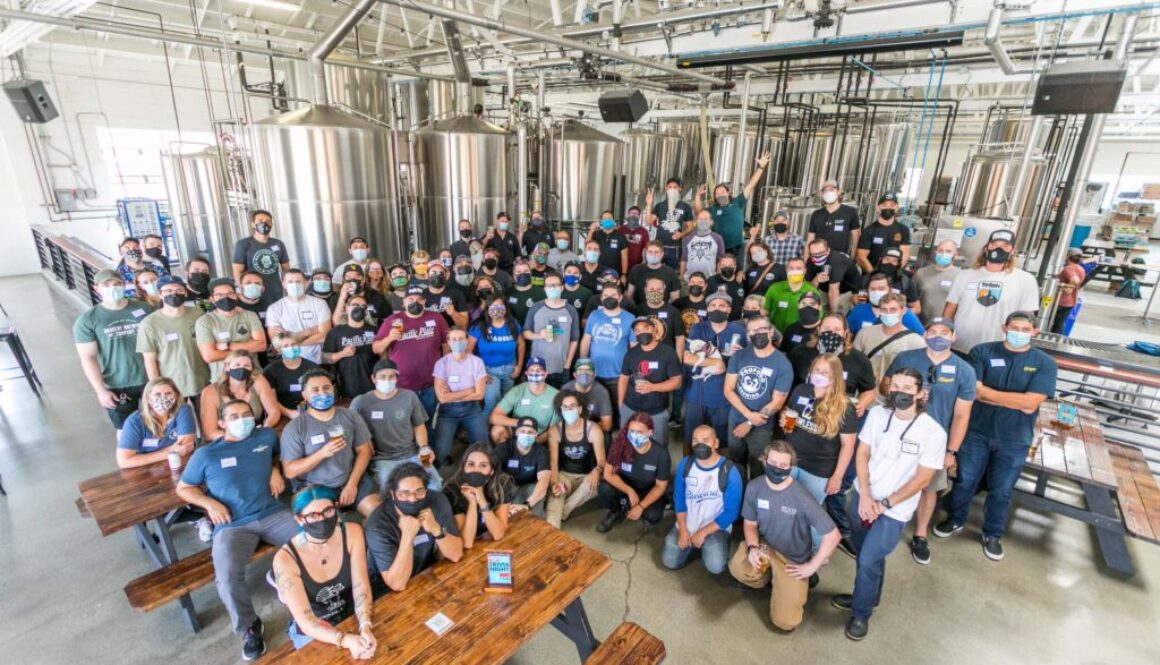
Common Space + Unity = Community
Tomm Carroll Cover Story, Featured Article
Not unlike almost everyone over the past year and a half, the Los Angeles brewing community has been hard hit by the Coronavirus pandemic, as well as the painfully slow return to whatever the new normal will turn out to be. LA Beer Week (LABW) was cancelled for 2020, as was the collaborative Unity beer that accompanies it.
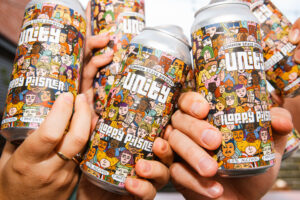
Photo Courtesy of Common Space Brewery
LABW was MIA again this past summer, but a few months ago the Los Angeles Brewers Guild (LABG) offered the glimmer of a return to normalcy: the promise of a 2021 Unity brew! Hawthorne’s Common Space was the host brewery and, for the first time ever, the Unity beer is a lager — a hoppy Pilsner to be precise, reflecting the latest preference of progressive brewers, rather than following the fads of the trend toadies. And it’s available now! Plus, a one-day mini-festival to celebrate the beer’s release is scheduled 1 pm to 5 pm at Common Space on Saturday, October 30 (see details at article’s end).
The Unity brew day in early August was a festive occasion for those who were able to attend — masked, of course — packing Common Space’s massive brewery. It marked the first time many in the LA beer community had seen friends and colleagues since winter of 2020.
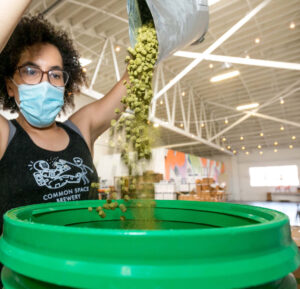
weighing out Talus hops
Photo Credit: Nick Gingold
“The LA craft brewing industry may have grown significantly in the last decade, but many of our businesses are still relatively small,” Frances Cannon (née Lopez), Executive Director of the Los Angeles Brewers Guild, said in a statement. “This means that most brewery members are wearing many hats and have little time to actually leave their breweries. Add in the challenges of being understaffed during a pandemic, and you really see how isolated our industry has been these last two years.”
Cannon added, “This year’s Unity brew was our first in-person Guild meeting since November 2019 and it was beautiful to see our community come together for the first time to engage, learn and interact with one another. It was a much-needed respite during this constantly moving time.”
To learn more about the decision to make this year’s Unity a hoppy Pilsner, Beer Paper chatted with Common Space’s Director of Operations Kushal Hall, along with Head Brewer Andy Link, as well as CEO Brent Knapp sitting in, on a warm, early September afternoon over a round of lagers (of course) in the brewery’s outdoor beer garden.
Creating Unity
Living up to its name, Common Space wanted the Los Angeles Brewers Guild to have a voice in choosing the style of this year’s Unity. “We put out a question to guild members, asking, ‘Hey, do you guys want to do an IPA? Or a hoppy Pilsner?’ I think the result was like 37 to three or something, predominantly for the hoppy Pilsner idea. There were a few voices in the guild who said, ‘You gotta do an IPA; if you don’t, it won’t sell,’” revealed Hall, adding with a smile, “So we’ll see soon if they were right.”
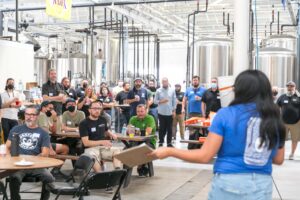
Photo Credit: Nick Gingold
In theory, at least in recent years, Unity has been considered a collaboration brew among LABG members. “But you can’t really have 90 breweries suggesting an idea for a recipe,” said Hall. “I’ve observed over the last couple of years that the host brewery pretty much does the recipe and maybe reaches out to get advice from a few people. But the brew day is more of an event and a celebration of our unity as a local industry, a day to chat about things and get ideas from each other. Although there were a couple people who jumped in with some hop suggestions and stuff. We took all that into consideration.”
Despite favoring a hoppy Pilsner as their Unity brew, Hall and Link did not have a pre-conceived recipe for that popular sub-style in mind.
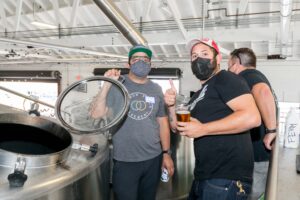
Photo Credit: Nick Gingold
“We had been playing around with different versions of like an IPL or an American Pilsner — whatever you want to call it — for a while, but never really hit on anything that was like a beer we want to develop into a brand,” explained Hall. “But it’s definitely a style we like. I think Andy and I were both probably a little inspired by a love of [Highland Park Brewing’s] Timbo Pils — a really good local example of that kind of hoppy, American Pilsner kind of style. We wanted something that wasn’t a beer we were making year ‘round.”
Indeed, Common Space had been hopping up lagers, and specifically Pilsner styles for some time, most notably earlier this year with its wonderful one-off, We Belong Together.
“That was like a stepping stone to our Unity recipe,” explained Link. “It was a Pilsner hopped with Zappa, a Neomexicanus hop, and [New Zealand’s] Nelson Sauvin.” The beer’s moniker refers to how well those hops work, aroma- and flavor-wise, in combination. “But we didn’t really have any idea at first which hops were gonna go into the Unity. Although one of our sponsors, Yakima Valley Hops, had a great selection to choose from.”
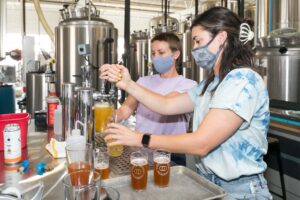
Photo Credit: Nick Gingold
Common Space lined up sponsors to help raise money for the guild, with many of the sponsorships coming in the form of donated materials. Yakima Valley worked with the brewers, and they were able to line up the hop choices pretty quickly. “We used Talus and Cashmere hops in the kettle, and then dry-hopped with Lupomax-Cashmere,” Link offered.
“Talus, a new-ish hop (formerly experimental hop HBC 692), was first used to great effect in the brewery’s Talus Beach, a single-hop hazy Pale Ale, released this past summer. “That was our first time brewing with the hop,” added Hall. “I get a lot of guava in the nose, but it’s more tangerine-y

of the incredible BLT he had the previous day
Photo Credit: Nick Gingold
“And then we dry-hopped with a small amount of Lupomax Cashmere,” he continued. “Like Cryo, Lupomax is a diffe
According to Hall and Link, this is Yakima Valley’s first time sponsoring a Unity brew and the hop supplier was pretty stoked about the opportunity. “They’re excited that we were using both Talus and the Lupomax, which are some products they wanted to focus on,” said Hall.
The malt bill consists of Weyermann Pilsner malts (which Common Space uses in virtually all of its lagers), and the beer was fermented with Unity sponsor White Labs’ 830 German Lager Yeast (ditto) for about two weeks in primary in the low 50º range before lagering at 42º and crashing to 30º.
The hoppy Pilsner, which finished at 6.1% abv, was brewed in two 40bbl batches, two weeks apart, which were blended together before they were to be packaged — about half in cans — during the first week of October, and made available immediately thereafter.
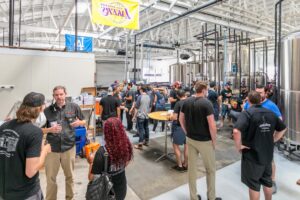
Photo Credit: Nick Gingold
And speaking of the 16oz cans, the label’s illustration (see accompanying image) was done by Priscilla Witte, whose murals appear in Common Space’s taproom. “This was an image we wanted — a big group of various people that sort of represent the craft beer scene in LA, not really depicting any particular individuals but just this sense of the diversity that we see and feel in our customers, collaborators and other local breweries,” Hall elaborated. “It’s just kind of a big, fun jumble of people that kind of feels the way it did when we were taking the big group photo here on the Unity brew day in early August.
“That’s what Unity is all about, he added, in conclusion. “The name is the brand, you know, so we just wanted to give it our Common Space illustrated feel that our labels have.”
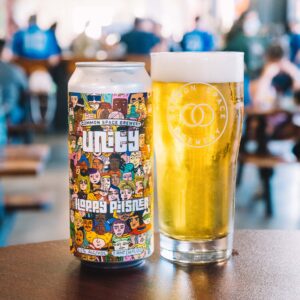
Photo Courtesy of Common Space Brewery
LA Beer Day: A Late Oktoberfest
Common Space’s Unity is available now at the brewery (on draught and in cans) and in at discriminating beer shops (in cans) as you are reading this. It will also be celebrated and served at the LA Brewers Unity Oktoberfest event outside on the grounds of Common Space in Hawthorne on Saturday, October 30, from 1 pm to 5 pm. Some 30 LABG breweries will be sharing unlimited tastings of over 60 unique brews, many of which are special seasonals, at this first LABG event since 2019.
It’s on All Hallow’s Eve weekend, so regardless of your feelings about wearing masks, they certainly would be appropriate faceware for the fest. Have a Hoppy Halloween!
For details and tickets, please visit www.labrewersguild.org/unity
Tomm Carroll is a Los Angeles-based beer writer / judge / educator / historian / collector / traveler / drinker (not always in that order). He can be reached at beerscribe@earthlink.net.
The History of LA Craft Brewers’ Unity
by Frances Cannon, Executive Director, LABG

Courtesy of Common Space Brewery
The Unity beer for Los Angeles was first established in 2011 by the two-year-old Eagle Rock Brewery as a unique collaboration brew to celebrate that year’s third annual LA Beer Week. The early iterations* of the brew were hosted by Eagle Rock, with the help of neighboring breweries and beer industry professionals.
After ERB’s co-owner and brewmaster Jeremy Raub founded the Los Angeles County Brewers Guild in 2013, Eagle Rock soon passed the torch of coordinating Unity to the guild. Since then, a different LABG brewery has been called upon to host the annual brew day, which serves as the guild’s largest internal community-building event.
Following are the Unity brews over the years:
2011 – Eagle Rock Brewery with Craftsman Brewing and LA beer industry colleagues
Tamarind Saison
2012 – Eagle Rock Brewery with LA beer industry colleagues
Berliner Weisse-style sour ale with Prickly Pear
2013 – Eagle Rock Brewery with Maltose Falcons Homebrewer Craig Wickham (winner of the Doug King Memorial Homebrew Competition; prize was to have recipe brewed commercially for the GABF ProAm Competition)
Red Mild with Hibiscus and Honey
2014 – Eagle Rock Brewery with LA Brewers Guild
All California Citrus Pale Ale with CA-grown malt, hops and local citrus.
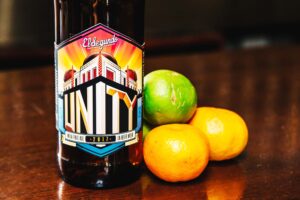
Photo Courtesy of El Segundo Brewing Co
2015 – Smog City Brewing with LA Brewers Guild
Tart Saison
2016 – Three Weavers Brewing with LA Brewers Guild
Experimental IPA
2017 – El Segundo Brewing with LA Brewers Guild
India Pale Ale
2018 – Los Angeles Ale Works with LA Brewers Guild

Label Courtesy of Los Angeles Ale Works
Duo – West Coast IPA and Hazy IPA (first canned versions of Unity)
2019 – Claremont Craft Ales with LA Brewers Guild
Double IPA
2020 – No Unity brew, or LA Beer Week
2021 – Common Space Brewery with LA Brewers Guild
Hoppy Pilsner (No LA Beer Week, but a one-day LA Brewers Unity Oktoberfest outside Common Space Brewery on October 30)
Notes:
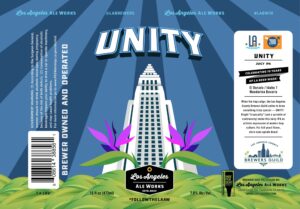
Label Courtesy of Los Angeles Ale Works
- Unity has been canned since 2018 but there are no firm rules that Unity hosts must use cans as their packaging.
- The annual Unity brew has grown every year, now bringing over 100 of its brewery representatives together for a day of community.
- LABG member breweries bid for the Unity brew every year. They present their intention to host and members vote for a winner. Those who don’t score the bid one year are always encouraged to try again another year.
* Author’s note: In 2010, for the second annual LA Beer Week, Eagle Rock Brewery and local beer industry colleagues brewed a special beer, which was served at Beer Week’s signature closing festival. It was a California Common (an ale/lager hybrid), cleverly titled LA’S TEAM BEER — so it sounded like “LA Steam Beer” when you said it. Eagle Rock was not brewing commercially in 2009 for the inaugural LA Beer Week, so there was no commemorative beer.

Bringing It All Back Home
Alexandra Nowell on Three Weavers’ Recent Buyback
‘Lynne, Alex — Say it ain’t so!” That was the text I sent to Lynne Weaver and Alexandra Nowell in mid-July 2018 on the day news had broken that their Three Weavers Brewing Company in Inglewood had joined the CANarchy Craft Brewery Collective.
Alas, it was so. But now, three years later, it ain’t so no longer.
In early June this year, in an article on Brewbound.com that surprisingly otherwise flew under the radar of the national and local beer press, it was announced that Three Weavers had reached an agreement with the collective to buy back full ownership of its brewery in order to “pursue [their] vision of a Three Weavers-branded brewery, tasting room and restaurant within Hollywood Park’s retail district” adjacent to the new SoFi Stadium in Inglewood.
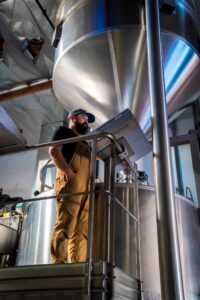
Photo Credit: Matthew Garcia @momentsinbeer
A couple days later, Beer Paper sat down with co-owner and brewmaster Nowell to discuss the deal, and what it means for the future of Three Weavers. Weaver herself was unavailable but, as her co-owner says, “It’s totally OK; Lynne and I both have the same script.” Since the agreement becomes effective August 13, we are publishing that interview now.
Beer Paper: My first question has to be, why now for this deal? And all of a sudden, out of the blue. I hadn’t heard any leaks, or even rumors.
Alexandra Nowell: It wasn’t out of the blue. There were no leaks; we kept our mouths shut. The deal itself really came together just over the spring, but the idea of reacquiring the Three Weavers brand is something that had been on Lynne’s mind for quite some time because of the synergy that needed to happen with Hollywood Park and Three Weavers.
BP: When you entered into the deal with CANarchy, did you and Lynne have in mind that at some point you might want to buy back the brewery?
AN: It was never the plan to separate from CANarchy; it was a really great relationship. The separation is completely bittersweet. They’ve been really good to us. I found a ton of excellent resources within the company. We’ve become more efficient because of them, but without sacrificing quality. I’m gonna miss having access to a lot of the resources that I had through CANarchy.
Fortunately, we were also really well positioned prior to joining them, so things aren’t actually going to change very much for us. We were really well established in terms of supply chain and relationships prior to the deal. But the thing that Lynne and I thank them for the most is essentially carrying us through the pandemic. We weren’t too bad, numbers-wise, last year but it was great that it wasn’t debt on our end. Instead, it was that collective element, because CANarchy’s numbers were up last year with so many off-premise-heavy breweries as part of the collective. We were able to lean on them to ensure our survival.
BP: Is that why the break was so bittersweet?
AN: Yes, the separation feels a little odd, but it was the right move for us as a brewery and a brand. And then of course, Lynne has been working really hard on the Hollywood Park project for a while. She threw around the idea of creating a new brand for it, but it never felt authentic to Inglewood. It just made sense that Three Weavers would be the namesake of this brewpub — and the only way to do that was to reacquire it.
BP: Was it proposed that it might be a CANarchy brewpub?
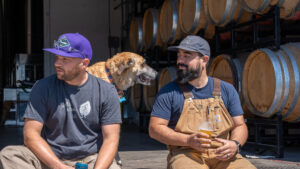
and Chris Gonzales
Photo Credit: Matthew Garcia @momentsinbeer
AN: No, it has nothing to do with them; it was completely separate. Lynne was pursuing the Hollywood Park project prior to us joining CANarchy; the conversations with the developers at Hollywood Park had already been happening. Lynne said, “I believe in this project and the potential success of it; I’m not going to let it go,” and so she continued working on it to really bring it all together in a way that made the most sense. We were fortunate that the CANarchy board was willing to allow us to separate. It was so amicable, it’s weird; things like this usually aren’t.
BP: So by mid-August you’re the complete owners again?
AN: Yes, this is 100% the original ownership group of Three Weavers: Lynne and myself, all of our original investors, Lynne’s ‘s friends and family.
BP: Can you talk about the financial terms of the buyback?
AN: No, I can’t, but I can tell you we bought the brewery back for cash, and our equity in CANarchy remains even with the reacquisition; it was cash-free and debt-free. We were surprised. They just offered it as part of the deal. So we’re still shareholders in CANarchy.
BP: So how do you feel?
AN: Grace under pressure. It’s been kind of surreal. I don’t think Lynne and I have fully realized how things are going to look after the fact, especially with this new element, the brewpub. But I know we’re both quite excited. One of Lynne’s superpowers is fund-raising — through a really extensive network of our existing investors who believe in Three Weavers and have stood behind us through all of this and want to see Hollywood Park be successful.
What’s really great is that the developers of Hollywood Park wanted to keep the complex true to Inglewood and Southern California, so they only sought out local businesses to come in and fill out the spaces as tenants. It will have a really authentic feel to it.
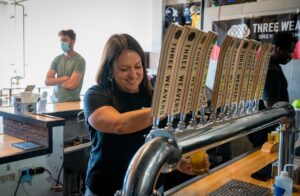
Photo Credit: Matthew Garcia @momentsinbeer
BP: What can you tell me about the proposed brewpub for Hollywood Park?
AN: It’s a ground lease for a piece of land on which we’re building from the ground up. It will be 22,000 square feet, a lot of it outdoors, like a beer garden, with different sorts of workable spaces to make it pandemic-proof. But also a place that can pack in a lot of people for football games, basketball games and musical events.
Of course, it will be a full brewery with a 15-barrel brewhouse and a full kitchen. It will also be an R&D brewery for us, although a lot of beers will come from our original facility. It’s gonna to be a bit of a fishbowl brewery as well, so it’ll definitely be a showpiece.
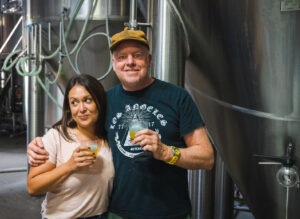
Photo Credit: Matthew Garcia @momentsinbeer
BP: And as a brewpub, you’ll be able to serve guest beers, as well as wine and cider.
AN: I’m so excited about that guest beer element because we’ve never had that, and it’ll allow me to flex my brewer friendships too. I’ll be able to bring in beers directly and just have really cool things on tap and available. So that aspect of it is really enticing. It will breathe some new life into the concept of Three Weavers.
We’re still throwing around concepts for the design, but we can’t actually start construction on it until after the Super Bowl, so we won’t take full possession of it until next March. I’m hoping we can be open by December 2022.
BP: Not to end this interview on a down note, but I would be remiss if I did not ask you about the issue roiling the brewing and hospitality industries this year: what I call the “BeerMeToo” movement, calling out harassment — and worse — of mostly female employees. As one of the woman owners of a brewery, what is your take on all of this?
AN: It’s not even a poorly kept secret that women have endured sexual harassment in the world forever, and in beer especially. So I was personally pretty highly triggered by reading a lot of those accounts because I had had similar issues with some of the men that were called out. The worst offenders are brewers at festivals, because of all the alcohol consumption.
But what really got to me the most is that I had accepted that behavior as okay. And looking back, [we women] shouldn’t have; it was almost like we were groomed to accept it. Yeah, I’m afraid that’s how it’s been. I knew from my early days as a baby brewer in this industry that I would not want to be tagged as the girl who cried sexual harassment, because that’s not how you advance in your career. I had a target to advance in my career as far as I could go, and just had to put up with it, as shitty as that is.
BP: Can you talk about any harassment or inexcusable behavior you have personally experienced?
AN: I had a female brewmaster boss very early on in my career who made it very difficult for me, and I left because of her behavior. It wasn’t sexual, but it was just unfair behavior towards me, because I’m a woman — which I did not expect from a woman. I was not going to stay when she obviously wasn’t willing to take me seriously and allow me to advance. So I left and found a new job.
BP: Where did you go?
AN: I went to Drake’s [Brewing in San Leandro, CA], and it was amazing. I never dealt with that behavior from my co-workers there, and I was the only woman who had worked there in many years. I was very fortunate that they took care of me and taught me that I was an equal. So I think I’ve just been really fortunate with where I worked. I haven’t had any issues. It’s when you get out in the wild…
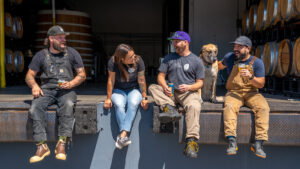
Photo Credit: Matthew Garcia @momentsinbeer
BP: And to close, has there ever been any issues at Three Weavers?
AN: As far as I know, nothing’s been brought to our attention. Lynne and myself have always been really accessible and communicative in terms of managers, and we’re friends with our staff. The Three Weavers team is our family, and we communicate like family members do. Our staff is diverse, racial- and gender-wise. We believe in advancement for all people, regardless. And if you bring something of value to the table and to our team, we want you to succeed, and try to help you get there.
I feel fortunate that we’ve been able to create a nice little bubble here at Three Weavers, which has been a very inclusive and safe space for all of its employees. And that we’ve been able to shield our employees from experiencing anything like that here on our turf. In Los Angeles, we’re very lucky to have such a diverse craft brewing industry, and brewing industry in general in Southern California. Other states, other parts of the country, not so much…
Tomm Carroll is a Los Angeles-based beer writer / judge / educator / historian / collector / traveler / drinker (not always in that order). He can be reached at beerscribe@earthlink.net.

Frantastic
Daniel Drennon Cover Story, Featured Article
Frances Michelle Cannon (née Lopez). Several years ago, I described “Franny,” the much-beloved Executive Director of the Los Angeles Brewers Guild, as a force of nature. She is a virtual (and powerful) one-woman army who advises and represents 95 independent breweries. In the wake of the tumultuous 15-month period which has seen brewery tap rooms closed due to a worldwide pandemic, social unrest that shook our country to its core and now revelations of rampant sexism (and worse) that have rocked the craft beer community, it turns out calling her a force of nature was an understatement on my part.
Franny‘s myriad challenges in helping LA breweries navigate (and even stay afloat) during this seemingly unending shitstorm of cataclysmic events are unimaginable. And yet she remains the rock that anchors a resilient and wonderful “family” of Los Angeles breweries that continue to emerge relatively healthy on the other side of continual chaos.
DRENNON: You are the first ever and only ever Executive Director of the Los Angeles Brewers Guild. How did you get the job?
CANNON: I was very fortunate to have been approached by members of the LABG board back in 2015 about a possible opportunity to become their first Executive Director. I had been employed by a brewery for the last four years but was ready for a change. I was a very active Guild member and handled a lot of the event coordination and marketing for the Guild so it was only a natural progression for me to sign on full-time. The timing couldn’t have been any better. It was not even a full month after my last day at my former job when that company sold to Big Beer and subsequently was no longer qualified to be part of the organization.
DRENNON: When and/or how did you first get into the craft beer scene?
I’ve been involved in the craft beer scene for over a decade. I started covering food and wine (then beer) events for various publications, then signed on with The Full Pint around 2011 as a regular writer and associate editor. I got my first real industry break at Golden Road where I was the social media manager for over three years then immediately moved on to the Los Angeles County Brewers Guild in late 2015.
DRENNON: Where did you grow up and what were you into?
CANNON: I’m an L.A. girl through and through. I was born up in the Bay Area but spent the majority of my life in Los Angeles. Left for college but came back about 11 years ago. I was the only girl in my group of best friends. I was more into climbing trees and going to punk rock shows than learning how to put on makeup. I got really into putting shows and events together in high school and throughout college. Looking back on those years, it’s clear to me that that DIY ethos and desire to cultivate community are what drives me in my career to this day.
DRENNON: How did that shape you into the person you are today which, by the way, is one of the most respected figures in a tight-knit craft community here in the second largest city in the country?
CANNON: Having been raised by a single mom, I learned early on how to be nimble and resourceful. I took those skills with me when I got into the music industry and have built on that foundation in my career today. Personality-wise, I think my no-bullshit attitude resonates with brewers and business-owners alike. We’re all busy and there is no time to waste. Despite having a firm work personality, I’m a big empath, which I feel brings me some balance.
DRENNON: Speaking of your abundant and seemingly endless supply of support to your member breweries, let’s segue into the profound challenges you have faced over the past 15 months. Let’s start with your current issue du jour, the revelations of sexism and worse that have come to light after Brienne Allan, a brewer at Notch Brewing in Salem, Massachusetts, posted her own stories of discrimination on her Rat Magnet Instagram page and asked other women to do the same. What followed was a veritable tidal wave of horror stories that detailed countless instances of sexism, sexual harassment and even abuse from one coast to the other and everywhere in between.
What are your own experiences, and how have you advised your breweries to handle this “crisis?”
CANNON: It’s been emotionally exhausting to deal with everything these last few weeks. Unfortunately, none of this is really new. We see it in every industry at some point, and you could say that the beer industry was overdue in its “reckoning.” I have to acknowledge my privilege. I haven’t had to deal with the terrible behavior or situations my colleagues have, but I am listening, learning, and trying to find every way to help those who haven’t lucked out the way I did. That’s not to say that I haven’t experienced any harassment over the years. There’s always that garden-variety misogyny that all women experience; be it a passive comment or someone undermining you in your role — but the fact that I can even call it “garden-variety” is indicative of how this toxic behavior has been normalized in society to begin with. The fact that I feel “lucky” means that getting respect and being empowered isn’t the norm, and that needs to change.
It’s uncomfortable for people to confront the idea that they may have been complicit. Our brewery members were very shaken up during all of this, and though our Guild was fortunate to not have had to deal with anything super explosive, it was important for all of us to reflect on everything from whether our businesses have the right human resources available including training and protocols to whether there is a culture of open communication and trust. Many have been taking a mental inventory of past experiences to try and identify whether they did enough to address an issue or take it seriously.
DRENNON: What steps do you think the beer industry needs to take to remedy what is clearly a systemic problem?
CANNON: The stigma of communicating openly about these issues needs to go. As a business or employer, it is one thing to have all of the legally mandated trainings and HR resources available. But it is another thing to create a safe and inclusive workplace culture where staff members feel that they can raise issues to management without fear. A recurring issue I have seen with these abuse accusations is that problems reported to management or HR often get overlooked or ignored. Another recurring theme involves victims not feeling comfortable speaking up because they don’t feel like they would be believed. Our industry has a lot of work to do in terms of accountability. I’ve been recommending to brewery members to consider third-party consultants and counselors to help them with addressing workplace issues in a fair and transparent way. Community-wise, it is important for everyone to help keep an eye out for those around them. If you’re at a brewery or an event and you see someone who may be getting harassed or needs help – do your part and speak up!
DRENNON: Another issue that rocked the craft beer industry over last summer (and actually before and since) was the social unrest resulting from the George Floyd murder (and many others) that featured the Black Lives Matter movement rising to national prominence. This challenged breweries with how to show their support and/or respond. How did you navigate that challenge and what advice did you provide to your breweries?
CANNON: Personally, I didn’t see the rise of the Black Lives Matter movement as an industry challenge. If anything, it was just a part of a larger battle cry for justice, equality, and representation. The fact of the matter is, our community represents a wide spectrum of opinions and while many were aligned in wanting to show support behind the movement, there is also a lot of nuance and politics that are difficult to articulate to consumers. I advised our members to be genuine in their support if they felt compelled to participate. There’s nothing that makes me roll my eyes more than performative activism, so I urged those to make meaningful statements and not empty ones; to put their money where their mouths were. I encouraged folks to invest thought into inclusive hiring practices, working with diverse nonprofits, or just lending a platform to the marginalized whenever possible. We’ve seen new partnerships, collaborations, and events born out of this – and that’s a beautiful thing.
DRENNON: Another challenge the entire craft beer industry has faced for many years is the lack of diversity in ownership, brewers, staff and even clientele. What are your suggestions as to how we can improve representation across all of those fronts?
CANNON: This is an issue that we continue to explore. Taking the time to focus on diversity, equity, and inclusion has been top of mind and has been tied to our efforts to protect our work force. But this is also a delicate topic. On one hand, you want to hire the most qualified workers. On the other hand, you want to open opportunities to the under-represented. So how do you accomplish both goals if your candidate pool isn’t reflecting the diversity of our city?
One of my personal goals at the Guild is to create a type of “open house” networking opportunity for folks to learn more about the jobs we have available and identify the path towards getting to those positions. Los Angeles in particular has a significant shortage in brewing talent. Our Guild brewery numbers grow every year, but the number of trained brewery professionals is limited. I’m seeing this lately as our state gets ready to reopen and breweries are hiring back staff. I think in order to boost diversity, we need to invest in training and outreach to really recruit outside of our very small bubble and create development plans for folks who want to eventually move from the hospitality end of the business over to production or the other way around.
DRENNON: I am guessing that even though the aforementioned challenges have been daunting, I would presume the most difficult of them all has been the Covid-19 pandemic. Your breweries essentially had to shut down overnight, pivot to canning and the resulting sales to survive and then cope with the insane see saw of State and LA County health department regulations that had them partially re-opening, face outside and food requirements, deal with hours changing by the week, etc. How did you find the courage, time and wherewithal to help them navigate through the storm?
CANNON: This pandemic has kicked my ass all around this county, but I want to think that we did the best that we could at the Guild to make sure that our members were supported. It was challenging to have to pivot from events and marketing opportunities to focusing on member advocacy, but I did this with the support of our members. The Save LA Brewers campaign to appeal to the Board of Supervisors was a team effort and I am so grateful to our community, the over 30 cities and chambers of commerce who co-signed on our efforts, and the dedication of our supporters who called, wrote, and posted on our behalf. The campaign drew enough support to get the attention of Supervisors Janice Hahn, Kathryn Barger, and Hilda Solis; the majority we needed to move the needle to reopen tap rooms and even get included in a few small business relief grants.
DRENNON: Are you hopeful that in the wake of this incredibly challenging time for the craft beer industry and, in particular, our local independent breweries, that they will emerge stronger, wiser, more diverse and better suited to serve the needs of our eclectic communities in Los Angeles?
CANNON: Absolutely! If there’s one thing I believe in, it’s the fact that our community is resilient and devoted to being better. Change doesn’t happen overnight, and I’m sure we will have dips in our journey, but the fact that L.A. is already a bit ahead of the curve in terms of diversity means we can only go up from here. I take pride in being able to name so many women and people of color in our industry and I’ll be even more thrilled when we continue to add to that list.
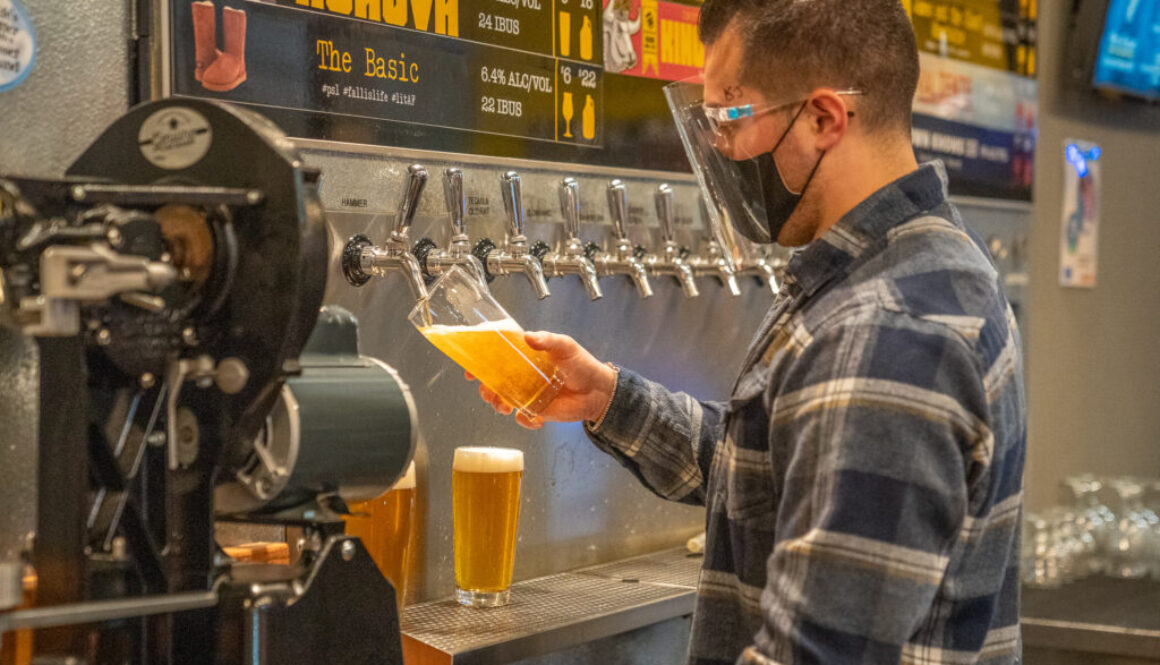
Bravery New World
Brian Avery was born and raised in the Antelope Valley (Lancaster/Palmdale). His parents made the move up to the High Desert for work back in the 80s. In an attempt to make up for living so far off the beaten-path, his folks made sure the family traveled as often as they could. All of the traveling, especially at a young age was very impactful to Brian’s development. Many of his current interests (cinema, cuisine and world culture) can be traced back to seeing new and foreign cities and countries, leading to a well-developed curiosity…always wondering what else is out there.
He ultimately attended UC Riverside to pursue a career in the film industry. But while there, he discovered a new passion. Homebrewing. After a few years working in “the industry,” Avery, who had become increasingly obsessed with the art (and the craft) of brewing, made a fateful decision to come home to Lancaster and open Bravery Brewing.
Presently, his wife Kara works as a flight attendant and with the perks of her job, the couple jet-sets at each given opportunity. According to Avery, “We both have a real bad case of wanderlust.” Avery still has that insatiable curiosity for exploration and new discoveries. That serves him well at Bravery.
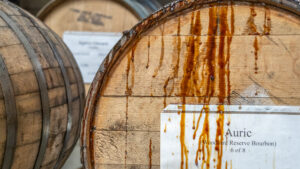
Photo Credit: Matthew Garcia @momentsinbeer
DRENNON: I gave it away in the intro, but as a kid, what job did you think you would end up doing as an adult and can you expand on how far you got down the yellow brick road to Hollywood?
AVERY: As far back as I can recall, I aspired to be a filmmaker. I’m an extrovert and always enjoy sharing stories with others. I attended the University of California, Riverside and earned a B.A. in Film and Visual Culture. After graduating, a “Right Time/Right Place” situation landed me a position as a Production Assistant on a large TV production, after which I would continue working for a couple years as a P.A. and boom mic operator on low-budget films. I spent these years of my life trying to take in as much as I could about the Industry.
DRENNON: What then got you into beer and ultimately into brewing?
AVERY: An older classmate of mine at UCR was already a bona fide craft beer drinker when we first started going to bars together. I remember he bought me my first IPA (Stone IPA), and I hated it! I couldn’t get past the intense bitterness of the beer. A few weeks later I tried another Stone on a whim and the second time wasn’t quite as offensive. Pretty soon I was craving the bitterness of the beer, and before I knew it, was driving down to Escondido to check out the brewery in person.
Living in Riverside during my college years meant a proximity to the MoreBeer! home brew store. With my interest in beer significantly piqued, I decided to attend one of the Home Brew demos the store conducted weekly. Anyone that’s been around a brew day knows how alluring the aroma of the mash and boiling wort can be. I was instantly drawn in! My hunger for knowledge kicked in and shortly after this demo I was brewing on my own home brew setup.
DRENNON: What led to the decision to open your own brewery?
AVERY: I fell hard for craft beer right out the gate. I would eventually own nearly every gadget that MoreBeer! sold, and at the peak of my home brewing was making two batches of beer every weekend. During downtime between shows I was working on, I began volunteering and then working at Bootlegger’s Brewery in Fullerton. Working there showed me both the positives and negatives of operating a brewery. It’s easy to glamorize
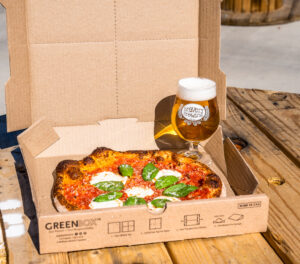
Photo Credit: Matthew Garcia @momentsinbeer
working in a brewery when you’re an outsider, but the reality is that it’s a lot of hard, dirty, and somehow simultaneously hot and cold labor. Instead of being deterred by some of the longer and more stressful days working in the brewery, my passion for beer was realized.
In the Spring of 2011, I made the decision to end my pursuits in the film and television industry and get serious about brewing beer. It’s possible I would have been happy working at someone else’s brewery, but I tend towards a need for creative control and ultimately would have found frustration if my voice wasn’t heard.
DRENNON: How and why did you choose the name Bravery? And tell us about the “Wall of Bravery.”
AVERY: Bravery is a contraction of my first and last names. It was a nickname given to me on my first set to help differentiate me from the other Brians on the crew. Side note, why are there so many Brians in the Beer Industry? Ha.
When it was time to settle on a name for the brewery, my partners and I got together to workshop some ideas. With how personal the brewery is to me, I asked how everyone felt about “Bravery Brewing” and there was unanimous agreement. Our partner, the late great actor R. Lee Ermey, of “Full Metal Jacket” fame was very vocal with his approval of the name.

Bravery Brewing’s barrel program
Photo Credit: Matthew Garcia @momentsinbeer
The Antelope Valley is host to a very large aerospace community. The USAF Plant 42 in Palmdale along with Edwards Air Force Base just to the North of us employ many of the people in our community. The name Bravery harkens to the people that comprise this Industry both locally and abroad.
Over the years our tasting room has organically evolved by the influences of our community. Much of the décor and memorabilia adorning our walls have been graciously donated by our patrons. The largest focal point of our tasting room is what we call the “Wall of Bravery,” a large American Flag surrounded by hundreds of photos of service members. The first photos to go up around the Flag were of our partners that served in the military as well as a photo of my great grandfather, Henry S. Wygant Jr., who served in the Navy during WWII as Commanding Officer of the USS Turner. The USS Turner suffered a series of internal explosions, sinking the ship and killing many of the crew including my great grandfather. The photo of Wygant on the Wall of Bravery is the only memorial that exists for him.
DRENNON: Why did you choose Lancaster?
AVERY: While I lived in Riverside for a couple years and then Anaheim a few years after, Lancaster has always been home. I love to travel and explore the world, but coming back to the High Desert after a long trip continues to bring me comfort.
I think most brewery owners would agree that having a meaningful connection with their community is of utmost importance. Mine and my family’s roots are deep here and I feel it would be nearly impossible to replicate this connection elsewhere.
DRENNON: You’re ten years in. That’s a nice achievement. Congratulations. What lessons have you learned?
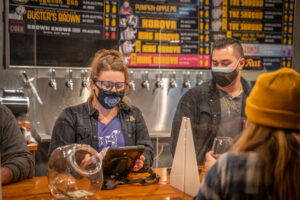
Photo Credit: Matthew Garcia @momentsinbeer
AVERY: Thank you! It’s hard to believe it’s been so long already. I’d say the biggest lesson is the importance of maintaining balance. Bravery started very small (3bbl brewhouse with 20bbls of cellar capacity), so this gave us opportunity for significant growth the first six years. It’s easy to overwork yourself and burnout if you don’t maintain balance between the brewery and your personal life. Given the nature of running a brewery it’s easy for your personal life to bleed in, blurring the distinction between work and home life. That’s not the only balancing act; there’s the balance of brewing beers for yourself versus beers for the consumer (unfortunately not everyone wants to drink ESB or Tequila Barrel-Aged Old Ale). There’s also the balance of managing your team, ensuring everyone is happy and motivated. We pride ourselves on relatively low employee turnover, but we also pour a great deal of our efforts into communicating and working with our employees on a daily basis.
DRENNON: Knowing what you know now, if you could go back in time and change anything, what would that be?
AVERY: It’s hard to say. Part of me wants to say we should’ve started larger, perhaps on a 7 or 10 BBL brewhouse. A lot of time and energy was spent brewing triple batches of the same IPA just to keep the taps flowing in the tasting room. At the same time, starting small allowed my brewing to be much more fearless. If a beer concept went horribly awry it wasn’t too painful to dump only 3 bbls of beer. I’m not sure if our portfolio of beers and/or brand would be significantly different had we started larger or if destiny simply has a way of getting you to where you need to be?
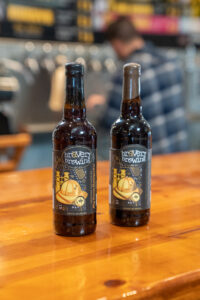
Photo Credit: Matthew Garcia @momentsinbeer
DRENNON: Who and or what have been your major influences as both a brewery and as a brewer?
AVERY: I love this question! I love it because this industry is filled with so many kind, intelligent, and caring people. I owe much of my initial ambition to open a brewery to Aaron and Patricia Barkenhagen of Bootlegger’s. My undying love for barrel-aged stouts and strong ales is largely in thanks to the early beers coming out of The Bruery as well as the early iterations of H24’s Barrel-roll program. Beers like Black Tuesday and Pugachev’s Cobra will always have spot in my heart, no matter how over-indulgent they may be. Lastly, I have so much respect for the team at Enegren Brewing. Chris, Matt, Joe and John have been so helpful both in Bravery’s buildouts as well as just great beer mentors. I’m very excited to see their continued success with lagers and other traditional styles, and the craft beer world could use more breweries like Enegren.
DRENNON: Are you where you thought you would be as a brewery from your initial vision and where do you see Bravery in another ten years?
AVERY: Ten years ago, I would have never expected the craft beer landscape to look the way it does today. The Industry has evolved in so many ways, most for the better, but it’s nearly unrecognizable from a decade ago. Ten years ago, I probably would’ve assumed that in 2021 I’d still be explaining what an IPA is to consumers and that B.A. stood for Barrel-Aged. I’m astonished with how common place beer terminology is today. As for Bravery, I had a lot of optimism for us from the get-go. I’m not sure I really knew back then what to expect in 2021, but there are definitely times when I walk through our production brewery and can’t believe what we built.
DRENNON: The proliferation of breweries over the past ten years has continually sliced the beer drinker pie thinner and thinner. What is your strategy for staying sound and relevant?
AVERY: Accepting that there will be battles you’ll win and some you’ll lose is crucial. There is always some lurking desire to try and enter the arena of every new beer trend, but I think for us, trusting our instincts is the best way to persevere. There’s a lot of noise out there, mostly coming through social media, but I think the breweries that remain genuine to the beer and to themselves will remain relevant and viable. A little authenticity will go a long way.
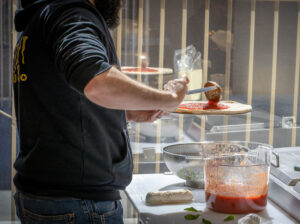
Photo Credit: Matthew Garcia @momentsinbeer
DRENNON: I get it. To thine own self be true in this brave new world! I can really coin (uh…steal) a phrase. And speaking of slicing the pie, in an exciting new development, especially given the current (pandemic) requirements to serve food with beer orders, Bravery is about to morph from brewery to brewpub with pizza as your focus. Tell us how this came about.
AVERY: Introducing a food component at Bravery was always a pipe dream of mine. However, the complications and expenses of building a kitchen always kept this dream just out of reach. One of the few positives to come out of the chaos and struggles of Covid-19 last year was how deeply it shook the foundation of our brewery. We were forced to reevaluate all the decisions and protocols we had in place, trimming the fat where possible and maximizing efficiencies. With the food requirements to serve draft beer in mind, we made the big decision to buildout a pizza kitchen inside our current Tasting Room.
Having experience making bread at home, as well as the broad spectrum of flavor profiles involved, pizza was the clear direction for the kitchen. I’m excited to make the best pizzas we possibly can; dough and sauce from scratch, 48-hour ferments and high-quality toppings. The other benefit of transitioning from brewery to brewpub means wine and hard cider on tap. My wife Kara is a wine sommelier and pre-Covid hosted many wine-tasting and education events. She is very excited to curate our wine list and, when allowed again, host more involved educational tasting events.
DRENNON: Please tell us about the Bravura Collective.
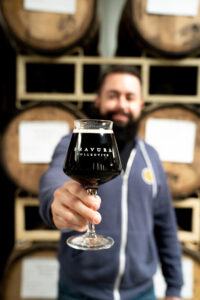
Photo Credit: Matthew Garcia @momentsinbeer
AVERY: We are now into our fifth year of the Bravura Collective. The B.C. is modeled after annual beer clubs similar to the Bruery’s Reserve Society or Cellador’s Syndicate membership. It’s a great way for some of our more committed fans to get their hands on exclusive barrel-aged releases, merchandise and of course added discounts on their purchases. I’m really looking forward to getting back to hosting in-person events again. There’s nothing like the immediate, direct feedback you get while pouring something special from the bottle directly into someone’s glass. Membership for the Bravura Collective is fairly limited, and will open for 2022 enrollment in September.
DRENNON: Is there a Bravery identity and/or mission, whether it be the styles you brew or the way you conduct business?
AVERY: Those that visit our tasting room or try our beers abroad know us for a large (for our size) barrel-aging program. The bulk of the beer we produce annually finds its way into barrels. This largely comes from our excitement to continuously experiment and try something new. There are still so many unknowns when it comes to barrel-aging beers (duration, type of spirit, blending, base beer, etc.). It will never not be a magical moment for me, pulling the first sample from a barrel that’s been quietly aging for several months.
DRENNON: Between talent and work ethic, which is more important?
AVERY: Work ethic is the more important of the two. Talent is great, but without discipline to routinely apply it, you’ll never get repeatable, quality results. The beers I initially brewed as a home brewer were horrendous. Stubborn determination and the scientific method go a long way.
DRENNON: If you had to describe yourself in one word or phrase, what would it be?
AVERY: I am always excited for the destination, but equally happy to be on the journey.

L.A. Strong: Los Angeles Ale Works Thrives on Teamwork
Daniel Drennon Cover Story, Featured Article
Four years ago, LA Ale Works opened a hop, skip and a jump from The World According to Elon Musk, aka SpaceX. In a virtual rocket launch of an exploding local brewery scene which blew up from a meager four breweries in LA County ten years ago to nearly 100 today, Los Angeles Ale Works, which had been contract brewing at Ohana Brewing while finding financing and looking for a home, landed in a community that, at that time, had no local brewery to call its own…Hawthorne.
Partners Kristofor (Kip) Barnes, the brewmaster (and beer writer!!!), and Andrew Fowler, the business manager, came together with a vision for a brewery that put teamwork before individual accolades, and the result has been that they have created a family-type atmosphere among their employees as well as their super loyal patrons.
Unfortunately, thanks to the “damnemic” that is seemingly interminable, I was not able to interview these two friends in their cozy taproom sipping through their exceptional line up of carefully crafted brews, but here are their answers to my emailed questions.
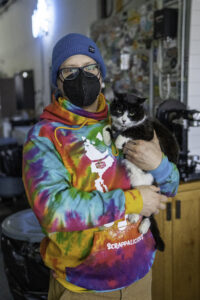
Photo Credit: Matthew Garcia
@MomentsInBeer
DRENNON: Kip. Did you start homebrewing while at USC and what was your major?
BARNES: I graduated with a BA from the Film & Television school in Critical Studies, basically critical writing for film. I actually got into homebrewing a few years after graduating from USC, but with a college friend of mine you may know, John Rockwell. John brought some of his homebrew on a camping trip to the Sequoias and I thought it was awesome. I started home brewing with him shortly after.
DRENNON: You were in the world famous Trojan marching band. What instrument did you play and how was that experience?
BARNES: I guess this counts as a beer related question. We did drink plenty of beer…though it wasn’t good beer. Playing Trombone in the Trojan Marching Band (TMB) was an amazing experience. I was able to travel the country with the team and also internationally. I have very fond memories of Hong Kong and the Aichi Expo in Japan. Also, there’s something that happens when you play with a group that big. It’s pretty awesome, but everyone needs to work together to make it happen correctly.
DRENNON: Well, it was a brewing-related question in the sense that there are so many brewers that are musicians, seemingly every single brewery in LA can field its own band for the Battle of the Bands held annually (note: except during pandemic years) during LA Beer Week. What do you think is the nexus between music and brewing?
BARNES: Can I tell you a secret? I’ve never been to the Battle of the Bands. I’ve always wanted to make it, but it just never synced up. Hopefully we can change that one of these years. Playing music is really collaborative. Everyone needs to play their part while also listening to everyone around them. It’s an exercise in multitasking. Making beer has a few crossovers in my opinion. Beers need to have a balance in them, with all the different parts playing together harmoniously. The team that creates those beers also needs to work together in collaboration. Only when we’re all working together, are we able to get the job done. Music has a way of being relatable in all fields. It’s emotive, mathematical, and very technical.
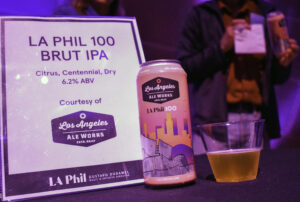
Photo Credit: Sarah Bennett
DRENNON: On the topic of music meeting up with beer, you pulled off a collaboration brew with the LA Philharmonic! What precipitated that super cool collaboration? Will we continue to see that beer?
BARNES: The LA Phil 100 beer was an incredibly exciting project. I’m very proud of that one. It started, as many things do, with the LA Brewers Guild. We donated beer to one of the Hollywood Bowl events and I was able to meet with Fran (Franny Lopez, LA Brewers Guild Executive Director) and the LA Phil team to talk over an idea. From there we formulated a plan with my partner, Andrew Fowler, the LA Phil team, and a couple of the musicians from the Phil, Chris Still and David Rejano. The beer turned out fantastic despite its fringe style, Brut IPA. We’ve concluded our LA Phil 100 run, but the beer may find its way back into our portfolio.
DRENNON: I was a fan of that beer and most Brut IPAs, really enjoying the dryness. So I hope they re-emerge. You became active in the local craft beer scene when it was in its nascent stage. Correct me if I am wrong, but I believe we first met at a formation meeting for the LA Beer Bloggers group at Steingarten (now The Stalking Horse) on Pico back in what, 2012? Maybe even earlier?
BARNES: Yeah, you may be right. I recall us meeting at Strand Brewing for an event. I can’t remember what it was for, but there was charcuterie and beer involved. I look back on the days of us all writing about the burgeoning beer scene in Los Angeles. It was a really cool time to be involved with the breweries, beer bars, and other writers. I think at that time there was far less competition in the industry so beer writers were eager to cover the intense amount of positive energy everywhere. The LA Beer Bloggers, now LA Beer Media, was designed to be a group of writers that would get together to talk shop and hopefully lift each other up. We also tried to connect writers that may have not had access at the time to the brewers they wanted to talk to. Side note: The first LA Beer Bloggers event was at Eagle Rock Brewery and that is where I met the lovely Erika Bolden, who I get to work with now at LAAW.

Photo Credit: Matthew Garcia
@MomentsInBeer
DRENNON: Those early days of LA beer scene were super fun and Erika is awesome! I recall you wrote a book detailing all of the regional breweries back then. What year was that, how many breweries were there at the time and what was that experience like, especially given that you had a dream of opening your own brewery?
BARNES: Writing a book, and being paid for my writing for the first time, was a wild experience. I wrote it in 2013, which was a really busy year with the LA Ale Works Kickstarter and the start of the contract brewing business. I was given an incredibly short deadline to visit all breweries and all reputable beer bars in Southern California. Firestone Walker Barrelworks was as far north as I went. I had to balance visiting, writing, and working my day job. Some weekends I’d travel to 20 or so places a day and I still have all my journals from each visit. I had to get better at tasting, managing my alcohol intake, taking detailed notes, asking thoughtful questions, and following a timeline. In 2013, I believe I visited around 80 breweries, around 15 of those were in LA County. Times have changed, haven’t they? There was huge growth in the industry at that time, which made it seem like a great opportunity for getting LA Ale Works off the ground, but the road ahead was still challenging.
DRENNON: Was there an epiphany moment when you realized you wanted to open your own brewery?
BARNES: Not to sound trite, but I decided I wanted to open a brewery shortly after brewing my first homebrew. I indoctrinated myself into the subculture, bought books, read them all, interviewed brewers, brewed as much homebrew as I could, won awards, put together a business plan, and incorporated Los Angeles Ale Works, LLC at the end of 2010. The only issue was finding the money, and that would prove to be the biggest challenge for the next six years.
DRENNON: Let’s bring in your indelibly dapper, incredibly nice partner Andrew Fowler, he who runs the business side of LAAW. Why did you guys choose the Los Angeles Ale Works name and what was the location scouting process that landed you in Hawthorne?
BARNES: Los Angeles Ale Works came to us while we were putting together our original business plan in 2009. We knew we loved Los Angeles and we knew that we wanted the brewery to be tied to our location. We trademarked the name and my dad created an awesome logo we used until we opened in Hawthorne. Most of the locations in Inglewood and West LA we liked were not available so we had to expand our search. I still remember when Andrew brought me to this little brick building in Hawthorne. Love at first sight. We considered changing the name, but we had built so much traction with Los Angeles Ale Works that it didn’t make sense.
FOWLER: The scouting process was long and arduous. We had looked at DTLA, Culver City, Lawndale and Inglewood, among many others. We were getting priced out, couldn’t find the right fit, or hit roadblocks with the various cities. Deep into the search I was getting lunch with a friend from SpaceX who suggested we look behind their headquarters in Hawthorne. Unbeknownst to us there were these beautiful brick bow truss buildings that reminded me of my roots in New England. It took six-plus months of begging for a landlord to consider us – most thought we were crazy. The rest is history; the City of Hawthorne and the community have been one of the most welcoming places. We can’t imagine the journey ending any other way.

Photo Credit: Matthew Garcia
@MomentsInBeer
DRENNON: LA Ale Works just turned four years old. What has been the learning curve, both as a first– time small business owner and as fledgling professional brewers?
BARNES: Homebrewing and professional brewing are very different animals. When you homebrew, you brew for yourself. When you brew at a brewery, you brew for everyone else. I think once you understand that, it’s easier to move forward. I hear many brewers lament that their favorite beers are not the customer favorites. C’est la vie. Managing is a challenge for me. We hire incredibly talented people who all bring unique skills to the team and I’m super grateful for the team we’ve assembled. But knowing what to say and when to say it has been a steep learning curve for sure. If playing trombone taught me anything, it’s practice makes perfect. I work to improve every day.
FOWLER: It has been STEEP. When we first started, Kip and I were trying to do every task, which isn’t sustainable. It also prohibits growth. One of our goals out of the gate was to create a culture among our employees where they want to come to work and they know there is a future career path. As a result of that commitment, our original Beertenders are working in sales, production and on the administrative side. We promote from within whenever possible but it is our culture that has allowed us also to attract outside talent with the likes of (brewers) Rian Van Nordheim, Rob Scott and Andrea Bermudez. This culture has grown into a family over the years and that family just keeps growing. We are exceptionally proud of this achievement. Why is that important? Well, when this little thing called COVID hit we reinvented our business four times over (at least). Our staff switched roles, wore different hats, and took ownership which allowed us to focus on running the business and keeping our heads above water. You could write a business school case study on what we went through in 2020 and we absolutely could not have done it without the support of our family.
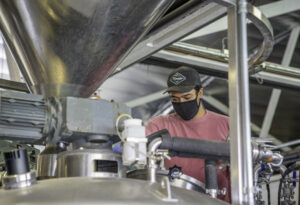
Photo Credit: Matthew Garcia
@MomentsInBeer
DRENNON: Love hearing that and that camaraderie shows when you are visiting LA Ale Works. What, if anything, would you do differently with the knowledge you now have?
BARNES: I focused entirely on brewing beer and making a great product. I think if I could turn back time, I’d probably have majored in business and marketing. This would give me more skills to undertake the challenges ahead. That being said, if I had done that, maybe I wouldn’t be where I am! No regrets.
FOWLER: We don’t have regrets – you need to live life to the fullest! We landed in an amazing community and we have a remarkably dedicated team.
DRENNON: What are you most proud of after your first four years?
BARNES: We touched on this before, but we have an incredibly talented group of people working here at Los Angeles Ale Works. This isn’t a brewery headlined by some hot shot brewer or an affluent restaurateur. We’re a collective of talented people each bringing their unique skills to the company, with a common goal of elevating the company and everyone with it. Our turnover is extremely low which says something. Customers enjoy our beer, our atmosphere, but most importantly the people working here.
FOWLER: Hands down it is our team. Second is the community that has been built around our brewery. We wouldn’t be here today without the support of both.

Photo Credit: Matthew Garcia
@MomentsInBeer
DRENNON: You mentioned them above, but as LA Ale Works has grown, you have brought in a couple of local pro brewers, Rian Von Nordheim (formerly of Stone Brewing and Brouwerij West) and Rob Scott (formerly of now defunct State Brewing). Can you speak to what they bring to your team and, for those of us who are not brewers, how you divvy up recipes and brewing responsibilities?
BARNES: We were especially fortunate to add Rian to our team. She brings a wealth of knowledge, experience, and organization to our growing company. I’ve learned a lot from her over this last year and she’s been integral in figuring out how to grow our output and also revamp our documentation. We’ve known Rob for a bit as a neighbor (at State Brewing) and were super excited to bring him on board. He brings creativity, passion, and energy. He thinks outside the box and is always willing to go above and beyond. As far as recipe formulation goes, we’ve always taken a creative approach to it. One of us puts a recipe shell together and we all talk about it to see if we have ideas. I had Rian handle our Christmas beers this year and Rob lent his complete expertise to the art of milkshake IPA.
DRENNON: Do you have a brewing philosophy and/or a mission statement for LA Ale Works?
FOWLER: It is our little tagline, ESTD (Established) Daily. Each day we want to establish ourselves as the best we can be in four areas – Community // Creativity // Quality // Beer. It’s a simple but easy reminder to help us continually improve no matter what happened the prior day.
DRENNON: Needless to say, 2020 was a nightmare for small independent breweries. How did you guys navigate the ebbs and flows of closures, regulations and restrictions?
BARNES: It’s definitely been a challenge to manage Covid closures. On the production side we haven’t stopped moving. At the start of the pandemic, we actually increased production and were packaging everything in 16 oz cans. It wasn’t until November that we officially slowed production down a bit. Our goal for 2021 is to be very focused and calculated with what we produce and package. It’s sad to see our taproom and patio empty and equally sad not to have all of our friendly taproom staff working here on a daily basis.
FOWLER: One week at a time was really all we could do. A lot of tough lessons were had along the way, but they made us stronger as a team and company. Between our canning line and being self-distributed it allowed us to be very nimble and roll with the punches. That, combined with the support of our retail partners, has kept us pushing forward despite the chaos.

Photo Credit: Matthew Garcia
@MomentsInBeer
DRENNON: What are your goals and what is your vision moving forward?
BARNES: We’ve got to get through this. This year, it is our hope to finally open our new taproom at Ivy Station in Culver City. I’m not sure what that opening will look like or what restrictions may be like at the time, but hopefully we can make it fun. We’re going to continue to fine-tune our more flagship beers and increase local distribution.
FOWLER: Like Kip said, we are pushing forward with our new location at Ivy Station in Culver City. The development will be a game changer for that part of the city when life returns to normal. The support we have seen without opening is amazing. Also, we haven’t really dabbled in the beer competition side (it’s EXPENSIVE!) so we plan to refine a few core beers and dip our toes into that this year. Outside of that we want to continue to focus on pushing ourselves to be the best that we can be as people and a brewery.
DRENNON: Between talent and work ethic, which is more important?
FOWLER: We start a lot of interviews with “Have you ever plunged a toilet?” At a small company everyone needs to chip in, right down to ownership. That’s the type of work ethic our team has — everyone pitches in regardless of the task. The irony is the people with that work ethic are also the most talented. There goes the secret sauce.
BARNES: I’d definitely agree with that. We want people to be somewhat autonomous so that everyone can put their own stamp on what they’re doing. That’s one of the reasons our team is so special. We have a ton of great people that all seem to really enjoy working here and everyone is like-minded in trying to build this dream that is LA Ale Works. This industry seems to attract a certain type of individual and LAAW attracts really good people from that subset. Our goal is to build on talent that our employees bring to the table and continue to support their personal growth as they grow with us.
DRENNON: What are you most excited about for 2021?
Fowler: Right now, it’s our 4th Anniversary Celebration. Unfortunately, no crazy party will happen this year but we have a ton of special releases planned throughout the month, including another set of collaboration beers with artist Brady Smith and a new Juicy IPA with the band Fortunate Youth. We are also super excited about our 2021 Bourbon Barrel Aged Series. We had a great response in 2020 so we doubled down with six different beers releasing in February.
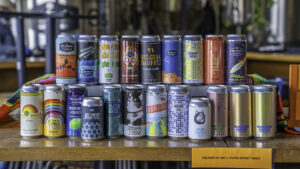
Photo Credit: Matthew Garcia
@MomentsInBeer
BARNES: Isn’t it crazy that it’s been four years? This last year seemed simultaneously like a blur and as if it would never end. 2021 is the year where the world hopefully returns to normal and us with it. One step at a time. We’re excited to open our second tasting room and yes, celebrate the four–year mark. When we can get back to seeing our friendly customers in the taproom and throwing awesome events, it’ll be a VERY good day. I have high hopes for the future.

